Blog - Steve Mackay
- Details
- Written by: Steve Mackay
Dear Colleagues,
Dr Jack Welch, a feisty chemical engineer, died earlier this month. You may not know who he was as he disappeared from the corporate scene a decade or so ago. He was the driven CEO of General Electric (or GE) – highly successful in growing the company to great heights – in fact, to one of the largest manufacturing and industrial companies in the USA (and indeed, the world). Whilst he was undoubtedly successful as a businessman, his argument on the need for the GE company to be a learning organisation resonates most with me.
It is arguably easier to dig stuff out the ground as a miner than to keep innovating with new products in a manufacturing organisation when one thinks of the huge competition from the likes of China. Certainly, miners have the challenge in that the prices they receive for their ore is predicated by buyers in a world market. One only needs to see the current impact of the dramatically lower oil price making the vast US-based shale fields uneconomic. However, if you are digging up a commodity in demand (e.g. rare earths); it is hard for any other firm to compete unless they have access to this ore. Manufacturing however does need continual improvements in one’s products and a huge level of innovation to stay in business.
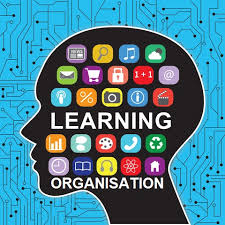
Hence, Jack Welch’s concept of GE being a learning organisation to allow for constant innovation makes huge sense.
Long Term Advantages
Jack felt that the only way a company could build a long term advantage over its competition was to become a learning organisation. This meant that every organisation has to empower each member of that organisation to continually learn, share knowledge and skills with others and then to use this knowledge in building better products and services. There must be an incredible thirst and enthusiasm for learning and innovation to build up the firm’s intellectual capacity.
Key Concepts
The idea behind a learning organisation is the need for everyone to keep learning new things. This is probably quite chaotic and indeed, anarchic in that many new approaches learnt may invalidate current ways of doing things. This means a fight to find the best solution and often a fairly dynamic work environment; but ultimately it means innovative products which make for a prosperous company.
It is important that managers drive the learning by example without fear. There is naturally the risk that you invest in training and educating employees that leave for better opportunities elsewhere. The opportunities for the organisation presented by encouraging learning are simply too good to worry about this aspect.
Learning isn’t just about attending a formal training course – this may be only a small part of the learning process. Learning is about encouraging the acquisition of knowledge and skills through mentoring, industry forums, the internet and a myriad of other more informal sources.
Learning is a slow uneven process with clear gains not always evident. One just has to be persistent and encourage a culture of learning and sharing knowledge. And in looking at opportunities to innovate.
Finally, in the application of learning to improving processes in search of better products and services there are often failures. This is all part of the learning process and should be acknowledged and accepted.
Jack’s comments included:
Some of Jack Welch’s more famous commentary:
"Each morning, I want every person at GE to know that two things will happen that day:
* Today, I will learn something from another GE employee, supplier or customer that will help me do my job better.
* Today, I will teach, support, mentor, advise and support the learning of a fellow GE employee.
Thanks to Elliot Masie for an interesting reflective piece on Jack Welch – a sometime contentious businessman but a visionary engineer.
Yours in engineering learning
Steve
- Details
- Written by: Steve Mackay
Dear Colleagues
The debate is now moving to whether the current coronavirus (as I write this, more than a hundred people have died) is more virulent than the earlier SARS virus with suggestions that it is even spreading before symptoms are evident. Some comparisons are also being made about the influenza pandemic in 1918 when between 20 and 40 million died near the end of World War I. (More people died in a single year here than in the horrendous Black Death Bubonic Plague from 1347 to 1351).
And we have Cyber Viruses of course
Naturally, there are a plethora of millions of cyber viruses being spread on a second-by-second basis through the internet. These are absolutely horrendously destructive to electronic media and have been known to shatter longstanding businesses and careers. But fortunately, with training and varied isolation techniques combined with a dose of common sense and pro-activeness, they can be kept at bay.

Working Online is a Win-Win-Win on So many Levels
In addition to avoiding the spread of biological viruses, the rapid growth in broadband, the need to reduce travel and accommodation costs as well as reduce harmful emissions (from travel), makes the whole topic of working and learning remotely very relevant today. It’s good to collaborate remotely without the need to physically travel — you can increase productivity, save time and money while reducing your company’s carbon footprint. As well as (today) avoiding spreading harmful diseases.
A Growing Need for Remote collaboration and Online Learning
With the growth of working online, there is a growing demand for remote configuration and testing of systems often performed by teams of engineering professionals collaborating virtually, while scattered at geographically remote locations. Admittedly, there are technical challenges of remote control and configuration on a real-time basis and there is a heightened risk of security breaches with catastrophic consequences for a remote automation project for example. However, the field of remote collaboration and configuration is growing fast.
Needless to say – if you can collaborate online, you can undoubtedly learn online. This is resulting in an explosion in online training and education.
Working in Teams
As engineering professionals, we tend to work in teams. This is often the sales pitch used to encourage the use of a new family of tools allowing for communication, collaboration and coordination. Without the requirement for physical travel.
The market of remote collaboration can be segmented by price and bandwidth requirements and ranges from (at the low end of bandwidth) email/instant messaging/phone calls/audio conferencing / webcasting/web conferencing/video conferencing and the big one – telepresence. The web conferencing is the tool that offers particularly useful features at an affordable cost.
Three Main Functionalities of Remote Collaboration
Remote collaboration is not only just about technology but has three main functionalities:
* Communication – the ability to exchange information between participants
* Co-ordination – the ability to coordinate tasks among the geographically scattered team
* Collaboration – the ability to achieve team goals.
Typical tools range from Gotomeeting, Livemeeting, Electromeet and WebEx. These allow typical web conferencing at an affordable cost. The main methods of delivery of web conferencing are typically using slides, audio, text chat, video streaming, use of a whiteboard, sharing of programs, file transfers and web touring.
In addition, the feature of simultaneously performing remote configuration and testing of a remote site is an added benefit in some of them, and this is the area that really interests me with our research and work. This is especially helpful for our online education using remote labs scattered around the world which our students can access wherever they are located.
The benefits of remote collaboration and testing include:
* Stops the spread of biological viruses
* Good for minimizing harmful emissions
* Convenience
* Easy to use
* Expertise available to more sites
* Higher availability of equipment
* Access to specialized equipment
* No geographical barriers
* Minimisation of travel and accommodation costs – lower greenhouse gases
* Considerably lower costs
How can you take advantage of these tools?
* Think seriously about using remote collaboration, testing, and configuration for your next project
* If you have access to broadband on your remote sites, this makes the decision easier
* Your younger staff would be familiar and comfortable with these tools
* Pay attention to the security of your connections
* Training is required to ensure everyone is skilled at using these tools
Naturally, everyone is not going to go across to 100% remote collaboration. Agreements and contracts often need a personal touch. Informal discussions during tea breaks are difficult to replicate through the sometimes clinical internet. And naturally, critical tests and interfacing with equipment where an expert is required physically on the spot are still essential. And as we all know, in many locations, internet connections are not possible, impossibly slow or tenuous. So as with everything – there is a trade-off required between the online and physically-on-the-spot worlds.
On the topic of remote control, John Alejandro King made the joking remark, which could be one day true: If you're not scared or angry at the thought of a human brain being controlled remotely, then it could be this prototype of mine is finally starting to work.
Yours in engineering learning
Steve
- Details
- Written by: Steve Mackay
Dear Colleagues,
As I was cycling into work this hot morning — forty degrees today —I was thinking about four incredible laws that we frequently use in engineering. Many of you would be familiar with them, but I see them come up so many times that I would thought I would revisit them.
The First Law: When there is any doubt, there is no doubt.
(Courtesy of the actor, Robert De Niro, I believe).
If you are contemplating a structure, such as a support, and are worried about some evidence of corrosion weakening it, you would be virtually guaranteed that there is a problem with the structure because of corrosion. I notice that in a major bridge collapse in Johannesburg, there were some questions asked during the construction about the efficacy of the support, but no one applied this Law. It could have saved lives and avoided injuries if people had been more critical and acted on their doubts.
Another example (from personal experience); you are testing some software for a power station control system, which, when switched onto the grid, will be providing critical power to a town. If you are a little concerned that there may be some unexplained glitches with the software, well — you know for sure — that these glitches will appear as you put the power station onto the grid. You would drop the power to the town unless you test the software meticulously and fix these bugs.
So, if there is any element of doubt in a design or in troubleshooting a situation, you are guaranteed that your worse fears will be realized if are you aren’t proactive. Presumably, this law is related to Murphy’s Law.

The Second Law: the KISS Principle
As most of you unerringly know, this means Keep it Simple Stupid. When building something or interfacing with people — simplicity is the best (and a great example of this is Steve Jobs’ initial work with the Apple iPhone).
Oddly enough, engineering professionals often are so overwhelmed with a design or project — probably because many other stakeholders are wanting to provide their input — that they forget it. And one ends up with a horribly complicated design or interface with people.
This is also related to the simplicity principle, traditionally referred to as Occam’s razor, which is the idea that simpler explanations of observations should be preferred to more complex ones.
The Third Law: The Law of Unexpected Consequences
This was illustrated to me many years ago. Traffic police — in Portland, Oregon, I believe — were puzzled by the increase in accidents after all the traffic lights in the town had been upgraded with the most reliable super duper LEDs. These were supposed to provide greater reliability and a sharper, more intense light.
However, the LEDs are very efficient and therefore do not waste their energy in heat (as per the older incandescent traffic lights which were hot to the touch).
The Law of Unexpected Consequences came into play, as despite an improvement in the new traffic lights operation, reliability, and quality of lighting, they did not melt the snow, which built up during winter. This obscured the lights to the oncoming traffic. The older incandescent lights melted the snow build up around them because they were hot – thus giving a clear light to oncoming traffic.
So any design changes you make often have some consequences you may not think of. Try and always think laterally about other issues that may result from the changes you put in place.
The final law is Newton’s Third Law: The Law that for every action, there is an equal and opposite reaction. As engineers, you would be hyper familiar with this law; but I believe it also applies to any activity you undertake — there is always resistance against an initiative (perhaps inertia). For example, if you decide to change a particular software design program to something which you believe is more efficient — you will unleash a torrent of abuse and disinterest in moving over — no matter how useful and improved the new software is.
The trick is always to get buy-in from all players and to educate them gradually to get them on board and supportive of the changeover or initiative.
Finally, I always love this quotation: A common mistake that people make when trying to design something completely foolproof is to underestimate the ingenuity of complete fools.
Yours in engineering learning
Steve
Mackay’s Musings – 4th December’19 #689
- Details
- Written by: Steve Mackay
Dear Colleagues
No matter how good you are as a presenter, I am sure you have been in that horrible situation when you can see your audience fast losing interest in your presentation - from furtive looks out of the windows, whispered interchanges, more intensive glances at phones or simply walking out on you - sometimes with not even a muttered excuse. You start feeling desperate at your critical information being ignored and simply lost. You may be passionate about your topic – but sometimes, your audience is bored.
There are a few simple techniques (perhaps, tricks?) that I have used to reclaim my audience and to re-invigorate the presentation. There is at least one positive – you are aware of this drop-off in interest - unlike many presenters who continue droning on and on and essentially wasting their presentation.
The first one is the quickest
The first technique is the quickest to implement. Come out from behind the comfortable podium or central position you are occupying and move to the edge of your stage. I even move into the audience and stand behind them. You do need to be comfortable with your presentation and be happy not to have your notes freely available, though, as it is hard to carry these around when you are dynamically moving around the room. Your audience will often be surprised by this maneuver and start focussing on you - in case you walk up close to them and ask them an awkward question.
 Change the Pace
Change the Pace
Change the pace at which you are presenting. If you are presenting fast - slow down and perhaps drop your voice to a whisper. Ask rhetorical questions that you answer after a short silence. The audience will start reconnecting with you as they are uncertain about this change in presentation speed and keen not to lose out.
Throw a Bone out to your would-be listeners
Throw open to the audience a problem which someone can attempt to answer. This is somewhat higher risk as you could lose control, so you may need to be quick to reclaim ground or guide the person solving your problem. The audience will become more interested as they may end up having to join in and there is someone different talking.
A Story is an Age-Old Favourite
Finally, telling the audience an anecdote or story always tends to galvanize their interest. The important point is to be sensitive to your audience and to ensure their time isn't wasted by your message being lost.
Perhaps, Alfred Hitchcock was referring to ensuring good connectivity with your audience with his comment: Always make your audience suffer as much as possible?
Good luck with your next presentation.
Yours in engineering learning,
Steve
- Details
- Written by: Steve Mackay
Dear Colleagues
I would respectfully suggest that most people and their companies go about their day-to-day work without a strong sense of purpose. However, in achieving success and fulfillment it is absolutely critical for both you and the business you work for to seek an overriding purpose.
Research Shows
Research clearly shows that the finest companies are those that have a deep sense of purpose and employ people who similarly derive meaning from this purpose. This overarching sense of purpose drives everyone on a day-to-day basis and gives meaning to their work.
As Nicholas Pearce (Professor from the Kellogg School of Management) remarks: The 'why we are here' drives the 'what we will do to achieve this'. Unfortunately, most companies in today's highly competitive landscape are driven simply by profit maximization. The financial pundits would fall about laughing if as CEO you indicated that you weren't particularly interested in profits but in providing meaning to your employees (and to the firm).
Obviously, you need profits to be sustainable as a business to pay the bills, to grow and to withstand the inevitable financial ups and downs. But this should not be the main reason why the firm exists. A firm should have some underlying purpose and provide meaning to its employees.

Purpose is a Powerful Driver
Most companies tend to indicate that they want to stay in existence and keep making profits. And most people are in auto mode and tend to front up to work without asking what they are doing besides earning a dollar to pay the bills. This makes their commitment to a company fairly shallow.
But believe me - having an underlying purpose is an extraordinarily powerful driver for everyone and enables you to easily distinguish yourself from other organizations. Without wanting to use our training and education firm as an immodest example - our overriding purpose of providing useful practical education to our incredible students, is a hugely powerful driver and creates passionate staff who can withstand the inevitable ups and downs with every business. Every day we get a stream of student success stories - improved careers/successful projects which have given them and their community’s better lives and which authenticates our stated purpose. What more motivating can one get?
You have to Ask the Hard Questions
You have to ask the question as to whether you are in the right job where you have purpose and meaning. And then try and change the environment to provide purpose. Or maybe look at other opportunities especially if you are in an unpleasant culture which impacts on your quality of life.
A Job with Meaning isn't a White Collar one
A job with meaning doesn't have to be a white collar professional job. It could be anything ranging from a sewerage worker (e.g. keeping you in a disease free and safe environment no matter how poor you are) to an operator of a pharmaceutical plant (e.g. providing life to millions of people suffering from cancer).
Band Aids Don't Work
Simply adding corporate responsibility or community activities to a company's mantra or providing funding for people who are disadvantaged in some way, isn't a long term sustainable reason for purpose in your company. There needs to be a deep and abiding reason for existence and indeed, growth.
Ask the Company Employees
A good way of ascertaining whether the people and the company they work for has purpose is simply to ask them. And if there is no deep reason why they are working at a company besides collecting a monthly salary or some vague job satisfaction, it is unlikely that there is some deep purpose.
It is imperative that you provide the people you work with a sense of purpose and meaning in their lives. And if you perceive that that a person doesn't fit here, it is possible that you need to counsel them about looking at alternative opportunities. Life is short and one needs to seize the moment.
Finally - Purpose Can Drive Profits
Many people have the misconception that you can only have a deep sense of purpose in your company when you are a Mother Teresa type organization providing the poor with care and support without any profits; but this is possibly missing the key point. Purpose will unerringly drive profits as you need to have a sustainable activity to continue to have purpose.
Yours in engineering learning
Steve
- Details
- Written by: Steve Mackay
Dear Colleagues
With the rapid technology change occurring today resulting in tremendous career opportunities, there are increasing stories of engineering professionals changing their careers. There is always a huge risk when you change – you could be currently working in a great job paying well and you decide to change because you perceive there are better opportunities and perhaps, more exciting technical challenges. There is certainly a huge amount of change occurring in the engineering and technology areas with the strong growth of artificial intelligence, machine learning, increasing use of software in every endeavour, Internet of Things, drones, autonomous cars…..the list goes on and on.
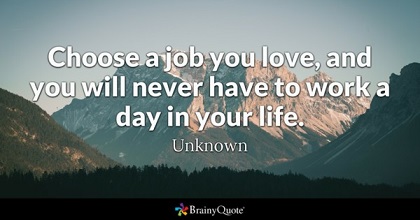
A few suggestions if you are in this position and thinking of change.
Carefully research the industry you are considering moving to. This means looking for real business trends in that industry – rising investment, major announcements, positive company results, share prices of companies and naturally job adverts. If there are only a few scattered announcements of growth in this area, there may be some unpleasant risks awaiting.
Examine Learning and Training Opportunities. Look for educational support for your move into these areas. Books, magazine articles, web sites and videos in this industry should be voraciously consumed on a daily basis. Courses presented by companies – generally in an online or very convenient classroom format are good. Or simply mentoring from colleagues working in this new area. The trick is also to gain some hands-on practical experience rather than simply theoretical knowledge. Traditional institutions may not always provide up-to-date educational support in new technology areas.
Use Synergies. You would surely have many skills from your current engineering career which you can build into your new one. Such as broad technical knowledge, quantitative skills and project management skills.
Getting into the New Industry. Look for ways of meeting up others working in this new industry. This means joining industry groups and networking with professionals working in this new area.
Put a Plan Together. This should be an action oriented plan over many months – perhaps as long as a year - on how to achieve your transition to your new career. Ensure you have full support from your family and friends – communicate carefully to them why this is going to benefit you and them. It is always hard to articulate these reasons but good to discuss with all and sundry.
Finally - build an outcome from your research, skills development and networking that enables you to be headhunted by a few high quality companies.
Amelia Earhart – that remarkable female aviator was quite right: The most difficult thing is the decision to act, the rest is merely tenacity.
Yours in engineering learning
Steve
- Details
- Written by: Steve Mackay
Dear Colleagues
One only needs to think of the huge cases of lying and dishonesty within large industrial companies such as Volkswagen (car emissions fraud), Enron and Tyco (both accounting fraud), and the increasingly cynical commentary about these cases from a weary public to wonder whether this is a fast growing trend. I often wonder whether it is simply about people regarding it as a playful attempt at gaming the system rather than believing these cases are fraudulent.
However, there is no doubt that these cases above are simply representative of blatant dishonesty and lying. Ron Carucci has done extensive research on the issue and believes that there are a number of simple reasons why dishonesty and lying penetrates an organisation – no matter whether you are running a tiny plumbing company with three employees or a billion dollar industrial enterprise selling electrical switchgear throughout the world with tens of thousands of employees.
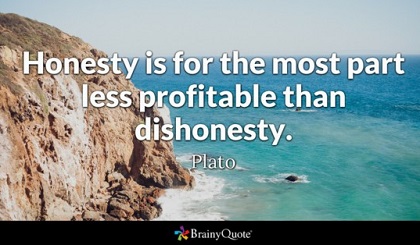
Ron’s research revealed that these reasons are easily within the control of the organisation and can save you from huge organisational value destruction. Even if an organisation isn’t actively pursued under the law for lying, thieving and corruption – there is no doubt that the resultant reputational damage is enough to destroy value. I saw this happen only this week; when a huge organisation was investigated for corruption and dishonesty in gaining governmental contracts – within weeks of the news being out – even though they were hugely profitable – they have been forced into liquidation as their banks being nervous about being tarred with the same brush – have withdrawn all banking facilities.
A few suggestions from the research (and my take on the issue):
A lack of Strategic Clarity. Where there is a mismatch between the organisation’s stated mission, vision and values and what happens on the shop floor, there is a high likelihood of dishonesty. When employees are required to do things which are in stark contradiction to what the overall positive vision requires - such as cutting quality corners and compromising safety in an attempt to lift production, things start going badly wrong.
Badly Designed Accountability Systems. Where employees are held to unfair targets which have no hope of ever being met. They then start to invent reasons why these targets are actually being met and being pushed to be dishonest. I think of the classical case with defective project management where an engineer is held to certain unreasonable time and cost targets where there is not a hope in hell of these being met – in an attempt to keep her job and her bosses happy, she will tweak the figures to show that she is still on target. Recently down the road from our offices, a huge business building power stations and mineral processing plants went belly-up because (too late) they discovered huge company-destroying losses in the construction costings as a result of dishonest (so-called ‘optimistic’) reporting.
Transparency in governance and management. Where open meetings are avoided and the truth forced underground about the real day-to-day operations of the company resulting in incorrect information spreading by rumour, the scene is set for the blocked artery syndrome of limited information flowing through the organisation and then being used to make poor decisions. Sure – giving bad news to management about problems on a project is hugely painful but the way the problems are dealt with is what predicates a successful company.
Development of Silos. I never cease to be amazed that even tiny companies rapidly develop a silo mentality where departments run their own race without working closely with their peers in other departments. This results in a dysfunctional company with dishonesty breeding as a result.
Conclusion
I can categorically assure you that there is no organisation on this planet which is 100% squeaky clean on these four measures above. However, working hard on an ongoing basis to address these points above will make a dramatic improvement to your operations, employee and customer satisfaction and indeed, your bottom line. And enable you to withstand the inevitable economic storms we all are buffeted with from time to time.
Warren Buffet says it all: "In looking for people to hire, you look for three qualities: integrity, intelligence, and energy. And, if they don't have the first, the other two will kill you."
Thanks to Ron Carucci and the Harvard Business Review for a fascinating take on dishonesty in organisations.
Yours in engineering learning
Steve
- Details
- Written by: Steve Mackay
Dear Colleagues
As we all know – projects fail at a regular rate. Particularly software projects. Gary Klein has referred to doing a thorough review of a project before it actually commences by visualising that it has finished in outright failure – something he labels a pre-mortem.
We all do post mortems on projects – particularly ones that flame out spectacularly and where one often is seeking to…. as the old adage goes: ‘to reward the guilty and punish the innocent.’ So this is an innovative suggestion to think about what could go wrong with the project before it even commences.
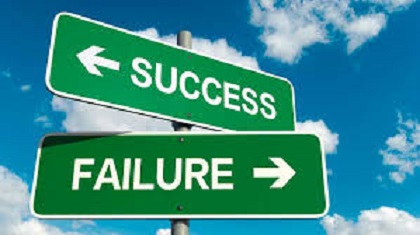
The suggestion for a pre-mortem from Deborah J. Mitchell (et al.) of Wharton School of Business is to imagine that the project has already occurred, and to detail the reasons for failure. This is said to help improve the identification of risks ‘by 30%’. I do wonder about the precision quoted here, but nonetheless, the concept is good.
The Trick
What team members are expected to do at a pre-mortem session is to imagine the project has been concluded, and there have been multiple sources of failure. The idea then is to identify what these failures are.
How do we do it?
It is relatively simple. The project team is gathered together, and an action-packed summary is given of the overall project – particularly resources required, critical elements, and outcomes desired with timelines clearly defined.
The Project Manager then asks everyone to visualise that we have concluded the project but that it has failed spectacularly. She then requests everyone to write down independently what the reasons for failure are (in an anonymous manner). They are to be as imaginative as possible in their thinking. Nothing is too far-fetched to consider. All the reasons are then read out by the project manager and discussed by the team. Hopefully, a series of action points are then taken as a result of this meeting.
Typical examples of Successful Pre-mortems
A list of a few interesting ones include:
The construction of a power station in a remote area was considered where potential failure was attributed to the main contractor going bust due to miscalculating the construction delays due to the impending rainy season. This assessment then resulted in safeguards being put in place to protect the client from the financial failure of the contractor. On the real project, this almost happened but the additional financial safeguards protected the client.
The impending construction of an iron plant was considered for the situation where the valuable electronics of the variable speed drives were damaged by an unexpected voltage spike through the system. Additional safeguards with surge protection were put in place on the project at significant additional cost. On the real project, there was indeed a voltage spike due to the installation of power factor correction equipment unconnected to the project. The sensitive electronic equipment was protected.
Finally, consideration was given to a large industrial PLC programming project for a control system as to the loss of some of the key programmers halfway through the project. Additional support programmers were put in place to critique the code. And, one of the key architects of the programming did get seriously ill. This protected the programming schedule.
What are the benefits of this pre-assessment process?
Besides the apparent major benefit of avoiding a project failure, other benefits include team members feeling valued no matter how outlandish their opinions are. It also fine tunes the antennae of team members to look out for potential problems and to be pro-active about dealing with them. Along with my usual mantra of 'When there is any doubt, there is no doubt.'
Thanks to Gary Klein for a thought-provoking discussion in Harvard Business Review.
Winston Churchill makes a brilliant remark relating to pre-mortems: "Let our advance worrying become advance thinking and planning."
Yours in engineering learning
Steve
- Details
- Written by: Steve Mackay
Dear Colleagues,
Surely, the KISS principle is one of the most useful engineering tools we have in our armory (KISS means Keep it Simple Stupid, for those who have forgotten). This should be applied to our writing so that it is simple and easy to understand.
But this principle is often forgotten. Perhaps, the overriding consideration we mistakenly have is to impress our audience with lots of gigantic words. I believe it is a privilege when someone is reading your communications. Therefore, you should ensure you respond appropriately to make it as easy as possible to understand what you are endeavoring to get across.
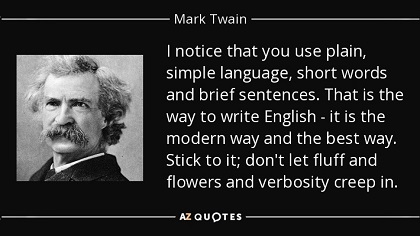
Engineering Professionals
Most of the communications that engineering professionals write are to colleagues – in my opinion – and this results in the use of lots of technology gobbledygook. Obviously one doesn’t want to descend to childish levels and treat one’s audience like complete orangutans with overly simple English, but a balance is required.
This problem of poor written English applies to all groups of engineering professionals – from the handy(wo)man, electrician, fitter to the Chief Engineer. My wife (being an ex-English teacher) often rips my (what I thought was) well-written prose to shreds because it is too clumsy or badly structured. So I am not immune to accusations of poor writing skills.
Examples
Simple measures of poorly written English include the average number of words in a sentence and the average number of syllables. But these aren’t always appropriate.
As we all know - probably the profession which is the most guilty of jargon-riddled communications are lawyers. Lawyers retort that they need to write with ‘legalese’ to ensure that they are consistent, specific and guarantee a common interpretation by all parties.
Here are examples of words that are hard to understand and consideration should be given to more straightforward language: abatement, interlocutory, malfeasance, turpitude and the list goes on…
A few suggestions:
• Briefly consider who your audience is (e.g., immigrants/a bunch of PhDs or farmers)
• Think about adding graphics to break up the text and to enhance the understanding
• If you are looking to justify your assertions, some backing references are always good
• Choose simple, effective words
• Keep your sentences short
• Keep paragraphs to about twelve lines with about twelve words per line
• Text size of 11 to 12-point is easily readable.
But don’t ask me about sans-serif vs. serif fonts – no one seems to agree here.
Graphics Rule
Finally – I had to laugh ruefully – if you are putting up signage in a zone with visitors who don’t understand English very well – it is probably a good idea to use lots of graphics to get important concepts across (such as “Snakes are in this area”). Words may not always be understood.
Leonardo da Vinci reminds us: Simplicity is the ultimate sophistication.
Thanks to the inimitable Don Christiansen of the IEEE for his write-up on this vital topic.
Yours in engineering learning
Steve
- Details
- Written by: Steve Mackay
Dear Colleagues
It is always hard to know genuinely how well or badly you are doing in your job when you try and get honest opinions from those around you. Especially if you are leading a team. The last thing on their mind is for a team member to give you an honest appraisal of how you are doing. In case it damages their position or irritates you. Thus you will often hear that you are tracking extraordinarily well and are the epitomy of success. Often this is very far from the truth.

Thus a few strategies are sketched out below to get some good hard honest feedback on how you are performing. Often extraordinarily painful but ….one can’t hide from the brutal truth. And once you have key information about deficiencies (and indeed, great things you do or have done); you can work on improving on these problems. Actionable solid feedback should be regular to show you how you are developing (either badly or well).
Jennifer Porter quotes from research which indicates that you need three elements to boost your performance:
- Clear objectives
- Feedback on how you are shaping up – both good and bad points
- A real ability and drive to achieve these goals (often the biggest challenge of all)
A few points on getting great feedback:
Maintain a Professional and Safe Environment for Everyone
Ensure that good quality feedback (not gossip or malicious back stabbing) can be passed on without fear or favour. As someone who is receiving the feedback – listen carefully and don’t interrupt when people are giving you the data.
Educate people in how to pass on feedback
Feedback should be useful and actionable. Not flim-flam, anecdotal and irrelevant fluff. Your team can be coached in how to pass on helpful feedback and to pass on hard truths in a professional clinical manner to benefit you and improve the performance of the team. Ask specific questions which come up with useful information:’Do I listen enough to what people say?’;’Do I encourage young engineers in their work?’;’Do I criticize others very negatively with no encouraging words?’.
Ensure that you get both positive and negative feedback
It is unlikely that you will only have positive or negative feedback issues. Mostly, it will be a mix of both attributes. Some managers brutally say when requesting feedback: ‘Give it to me with both barrels – all the worse attributes.’ However, often there are some hugely positive personality traits that should be mentioned as well.
Focus on the trait or attribute rather than the person
Deal with the issue rather than the person when listening to someone list what they believe needs to be improved. This will help you deal with the irritation or anger that may well up in you when you believe you have received unfair criticism. Even if supremely upset by the feedback, ensure you let the person know that you are grateful for her honesty.
Reflect on the feedback, deal with it and maintain the improvements
It is now vital to consider the feedback and work out ways to fix the problems. Sometimes the feedback isn’t fair; but generally there is always an ounce of truth in the commentary – thus requiring action. Write down what the feedback was and ensure you remind yourself every day what you have done to fix it. Confirm with yourself on a daily basis that you have changed and then after a few months, review it with the person who made the original comment and check.
Remember it is always painfully hard to make adjustments to one’s habits and personality traits. However, in acting on fair commentary you will be an improved team member or leader. This process of identifying flaws and fixing them is a key element of being a leader.
Thanks to Jennifer Porter of the Harvard Business Review for some thoughtful commentary.
Ken Blanchard makes the point: Feedback is the breakfast of champions.
Yours in engineering learning
Steve
- Details
- Written by: Steve Mackay
Dear Colleagues
We talk about ongoing learning and development for people all the time but I believe many managers only pay lip service to genuine learning opportunities. Many times, an employee is on a training course to ‘tick the box’ to comply with some ‘magical’ company development plan.
We all need to make learning a key part of what we do in business. Not only does this provide useful technical skills but it helps to boost the firm’s culture in a positive way. There is no doubt in my mind that a huge amount of training is totally wasted with no tangible outcomes besides having a ‘jolly’ at the firm’s expense.
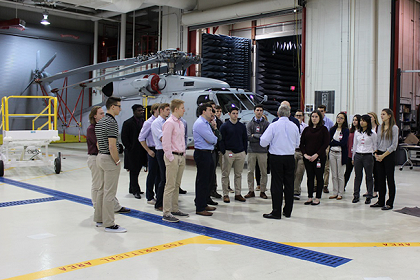
Humble Suggestions
A few suggestions on building learning as a key part of your activities:
You should always talk to your colleagues about how your learning is genuinely boosting your skills and expertise. You have finished a course on variable speed drives/pump cavitation problems/corrosion so that you can troubleshoot current problems or design with the latest concepts. Show everyone real benefits that you have achieved and motivate them to engage in a similar journey.
On the other hand, if you come back from a training course with the observation that it was ‘interesting’ it is likely that it was a total waste of money and time. You need to show real tangible benefits from the training or education. Something that will benefit not only you but the firm.
Don’t hide failures but learn from them. A great way of learning huge amounts is via analysis of current projects that may have failed or didn’t deliver the results everyone expected. Do a detailed assessment of what happened with the failed project and ensure everyone learns from it. A failure is often a key pathway to a successful outcome. Certainly, a great way of learning.
Make it easy to engage in learning or training courses. When someone goes on a training course make sure they are supported while they are away. Nothing is more disconcerting than having one’s phone ring for urgent help with troubleshooting of that pesky conveyer belt tramp iron magnet while you are on a course.
Training and development isn’t a comfortable experience. Ensure that people engaging in learning know that it may be a challenging and demanding experience. Learning about new technologies and approaches can be tough especially when you have to challenge and change old approaches in undertaking a project. This may cause some angst and uncertainty but this is all part of the learning process.
Freshen up your work experience. Another great way to learn huge amounts is to join new projects with unfamiliar challenges and where you are expected to draw on new expertise or perhaps move to to a new location.
Thanks to Kristi Hedges of Georgetown University/Harvard Business Review for some thoughtful commentary.
I like this old Chinese Proverb (from Alice Fonda-Marsland): A man who asks is a fool for five minutes. A man who never asks is a fool for life.
Yours in engineering learning
Steve
Mackay’s Musings – 19th September’18 #679
- Details
- Written by: Steve Mackay
Dear Colleagues
We wouldn’t have breakthrough discoveries without that wonderful quality – curiosity - from inventing fire, the aircraft to the Google search engine. That magical feeling that goes about investigating new information, pondering on a different way of doing something or simply trying something out new (and often having that incredible ‘Ah hah’ moment) is an innate quality we all have.
No More Boredom
 Without curiosity we would have a very boring and unproductive world. It is key to your success in your engineering career. However, many managers and companies fear it as it can be rather disruptive and encourage chaos. Something engineering professionals with their love of order aren’t always fond of. Certainly, you don’t want chaotic curiosity occurring in a bridge design otherwise you may have some catastrophic results.
Without curiosity we would have a very boring and unproductive world. It is key to your success in your engineering career. However, many managers and companies fear it as it can be rather disruptive and encourage chaos. Something engineering professionals with their love of order aren’t always fond of. Certainly, you don’t want chaotic curiosity occurring in a bridge design otherwise you may have some catastrophic results.
Without any question – curiosity is particularly important to engineering professionals and their organisations in lifting one’s creativity and strengths. It improves your performance especially in an uncertain economic environment making you more resilient to the changes coming.
Typical benefits of curiosity include: Fewer errors when making a decision as you are constantly questioning assumptions and stereotypes; driving innovation by being creative and questioning; perhaps reducing conflict as you consider other people’s perspectives and finally more open communications with others as you open your mind to alternatives.
However, in my experience, leaders of organisations often avoid encouraging curiosity. They have huge and often brutal performance targets that your are being measured by. This means that they are absolutely focussed on these targets in their clinical search for efficiency and can’t avoid time for experimentation and curiosity.
How do you increase curiosity in your engineering life ?
A few suggestions (from Francesca Gino modified by my take on engineering):
Surround yourself by curious people. Hire, build your team from and actively move towards curious people. This will have an avalanche effect on your performance and that of your team in lifting your creativity dramatically.
Model yourself as an inquisitive curious person. Ask questions and investigate and encourage others in your team to do the same.
Encourage learning every day all day. Open the opportunities to further study to all your team and certainly yourself. I dedicate an hour early every morning on study and gaining a skill or an appreciation in a new area. Sometimes a painful pursuit as it challenges one’s brain. But it is the only way forward in building and sustaining your engineering career.
Randomly set up regular “What if” and “How Might we” sessions on particular topics with your team.
Remember that Millions saw the apple fall, but Newton asked why.
(Bernard Baruch)
Thanks to Francesca Gino of Harvard Business Review for an interesting take on this topic.
Yours in engineering learning
Steve
Mackay’s Musings – 21st August’18 #677
- Details
- Written by: Steve Mackay
Dear Colleagues
As we all know – at various times one can be absolutely overwhelmed with work and ‘issues’ to deal with. Nothing unusual in the engineering workforce especially with project type work and harsh deadlines to meet. Examples of stress include: you may feel that you can’t cope with yet another email as you have this seemingly unlimited list of tasks to do; the phone is ringing with urgent requests; people are shouting at you for your decision on a crucial project; you have to prepare for an awkward presentation next week… and there are snide comments about possible cost overruns with a project you are managing. And to add insult to injury, you may feel that in your leisure time at home that you should be working to catch up.
It is important to deal with these times effectively so that you can pop out the other side with the load removed from your sagging shoulders.
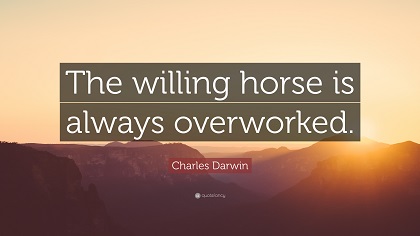
A few strategies are outlined in dealing with this state of affairs.
Apart from taking a deep breath and having a coffee with a ‘chum’ to unload on all the issues; think about doing one of the following:
Give yourself a strong one-to-one talking to
Talk to yourself using language along the following lines:
You can do all the tasks but only one item at a time. Your health and personal well-being is considerably more important than any job. You have overdelivered and worked yourself into the ground for this firm and some personal space is needed for you.
Do a quick audit of your real working time
Often, we find that we tend to overestimate our time spent on working. For example, the number of people that work more than 60 hours per week is very much less than 10% of the workforce. If you believe you work long and outrageous hours, you will tend to believe this and accept this as a fact. So do a reality check and look at your work time for a week and see what it is really in hours and minutes. You may be surprised that it is considerably less than what you had originally assumed.
Avoid doing brief work items (such as emails or writing a quick summary) during your free time supposedly off from the office. We are so connected these days that it is relatively easy to do this by email; but it should be avoided as you then start feeling that you are continually at work and in fact may take longer to deal with these particular items as there is seemingly more time around.
Confirm what people really want
Often, being conscientious, you may bust a gut to do a task quickly for a supposed urgent deadline. Which in reality doesn’t exist. Check with your boss as to when she really needs the job done by. You may find you have more leeway than you first thought. It is best to ‘schedule in’ the tasks so that they fit effectively into your overall work week. Having peaks and troughs isn’t a particularly efficient way of working and puts you under stress.
Delegate lovingly and effectively
You may be reluctant to delegate tasks as you believe only you can do them best. You may have no subordinates. But in today’s professional world it is perfectly acceptable (and indeed, encouraged) to delegate tasks to your co-workers and indeed, your boss with measurable tasks (and deadlines).
What does success in your job really mean?
You may find that you are going to the n’th degree to complete a task when only a short summary is required; rather than a massively detailed analysis. Be wary about putting in too much effort to a task when it may not require this. Perhaps, you are using other driven workers in your office as examples of what you think is required; when this is all unnecessary.
Take your time off Now rather than waiting forever for a gap in the workload
You may be a busy person and the tasks seem to constantly float in keeping you busy at all times. So you will simply have to corral the tasks and give them to others or delay them and warn your boss and peers that you are taking a break. If you have been working flat out and ‘delivering’ they will understand.
This comment by Mokokoma Mokihonoana is also true but one should see it in perspective:“When you truly love what you do, not working is hard work.”
Thanks to the Harvard Business Review for a fascinating article on this topic written by the inimitable Alice Boys.
Yours in engineering learning
Steve
Mackay’s Musings – 14th August’19 #676
- Details
- Written by: Steve Mackay
Dear Colleagues
I believe most of us get to some stage in our lives where you start asking the inevitable questions such as: am I doing the right thing; am I in the right company or career; am I progressing somewhere; am I going to be financially secure when I am older; isn’t this work somewhat predictable and boring; should I be doing something more exciting and rewarding…. ?
This is where you are seeking more meaning, fulfilment and satisfaction in your career (and indeed, life) against the backdrop of the usual financial pressures of paying off a home, car and putting the kids through (private) school and trying to afford an upcoming entertaining vacation. A veritable vice grip of constraints. And naturally, in keeping your family relationships on an even happy keel.
 This questioning period happens especially in mid life. You have realized that you aren’t immortal – time is moving on, the rip roaring twenties are a memory and you can see where you are heading with your career with some uneasiness. Your income and career track is pretty predictable and things aren’t going to suddenly change. There is no magic unpredictability where you suddenly win Lotto ahead.
This questioning period happens especially in mid life. You have realized that you aren’t immortal – time is moving on, the rip roaring twenties are a memory and you can see where you are heading with your career with some uneasiness. Your income and career track is pretty predictable and things aren’t going to suddenly change. There is no magic unpredictability where you suddenly win Lotto ahead.
It is important that you don’t ignore these feelings and the associated questions you have. But it is also vital to try and do anything to deal with this situation in a rational and methodical manner. I have come across many engineering professionals who have suddenly ‘chucked it all in’ citing extreme initial happiness with their decision and then a year down the track have realized that they are in a worse predicament because of their knee jerk reaction. And their age has now made it difficult to re-establish their financial stability.
A few suggestions
- The first thing is to carefully reflect on what is making you unhappy or unsettled. It may be some minor issue in the job which you can easily deal with. Or it may be something more intractable like a job which is a dead end, or highly stressful which will require more substantial steps to deal with. Bear in mind that your feelings are perfectly natural and experienced by many (most) of your peers.
- The second item is to consider small incremental changes to your career as this is the lowest risk approach. You may be able to engage in a new engineering project/ a new product line or join a new initiative of the company – for example – in launching a new product or changing your offices from Raleigh to London. Alternatively, you may consider reducing your hours so that you only work four days a week and can focus on your burgeoning hobby or charitable work on this day. Another strategy to follow is to closely examine the organisation you work for and see whether it is missing something where you can add enormous value with your current strengths such as in product development or working with people. Think laterally and don’t always think of promotion but in moving sideways as a possible solution.
These small changes could have a huge ongoing positive impact on your life and engineering career. Whatever you do; always consider improving your learning experience – whether it be through a formal course or a project you take on which challenges you and draws on your strengths and interests and improves your knowledge and skills. And always build in a strong focus on finding meaning in what you do.
Finally, you may find that you can seek meaning and fulfilment easily but not in the obvious place such as directly in your career but outside your job with such items as charitable endeavours/setting up a new musical/craft or food festival for your community. This means you continue working as you have been but derive more satisfaction from these other external activities.
- Big Changes. You may find the previous incremental suggestions not suitable and you may need to engage in a greater change such as a total career or life style change. If you decide to embark on this ensure you can count on massive and sustained support from your partner and family over a considerable period of time. And visualise deeply what this change will make you feel like in a year or two (from when you make it). On deeper reflection, you may find it has no impact on your current feelings apart from making you more frustrated. And other changes are thus required.
Finally
Whatever you do – don’t sit around hoping for things to change. They won’t change of their own volition; so a careful consideration of how to move forward is required. However, don’t do something precipitate in suddenly changing without carefully considering what you are seeking. As you may end up in a far worse position and put yourself and your family in a bad place.
Thanks to Rebecca Knight of the Harvard Business Review coupled with Prof Gianpiero Petriglieri’s (Insead) wise commentary for a thought provoking discussion.
Remember as some wise pundit (not Winston Churchill) remarked: "Never let a good crisis go to waste."
Yours in engineering learning
Steve
Mackay’s Musings – 7th August’19 #675
125, 273 readers – www.idc-online.com/blogs/
- Details
- Written by: Steve Mackay
Dear Colleagues
When I am discussing a critical issue with a colleague and confirming that he has ‘got it and agrees with my sentiments’, I also look carefully at his body language and I am never disappointed. Arms folded tightly, a quizzical frown and avoiding a direct glance are sure signals that what I have said hasn’t gone down well and disagreement is in the air.
You need to study body language – that interesting combination of facial and eye movements and limbs - perhaps overlaced with the tone of your voice. Apparently, only 10% of the meaning transferred between two people talking is via words – the rest – a huge 90% is through that ungainly combination of tone of voice and body language.
 How to Use Body Language more Effectively
How to Use Body Language more Effectively
Typical elements of body language include:
Closed Body Posture. This means the person is hunched over, arms tightly wrapped around the body, legs crossed, hands perhaps hidden stuck in pockets and eyes looking everywhere but at you. Disagreement and unhappiness squeaks from every pore of this person.
Open Welcoming Body Posture. Arms and hands are open and facing you, face is friendly, eyes are twinkling and perhaps legs are sprawled open. This person is happy, positive and agreeing with you - wanting to work with you and contribute.
Eyes are everything. If the eyes are narrowed, brows are furrowed or eyes are blinking rapidly and the individual is looking away from you there may be some unhappy issues that this person has with you.
Touching one’s face or head. If someone is reflectively tweaking their ear lobe, they may be in a reflective mode. If they are touching their face repeatedly, they may be concerned about what you have just told them.
Smiling. There is no doubt when a person is genuinely smiling. Her whole face joins in with the smile. However, when the face is rigid and only the lips tweak cautiously with a slight smile, you can be sure that this person is not happy or not engaged in the smile at all. One can get a good idea of what this useless smile is like when you watch many politicians at work who often make comments which aren’t sincere and the edges of their mouth tweak in a token smile. Don’t trust this person’s words.
Finally….
Most of the discussion above has been when you have to interpret someone’s body language. However, you also need to be keenly aware of your own body language otherwise you may give the game away. When you are giving an enthusiastic pep talk to a group and want to instill confidence in them as to your intentions – you have to open your hands, arms and ensure you grin enthusiastically and infectiously (using your whole face).
Peter Drucker makes the vital comment: The most important thing in communication is hearing what isn't said.
Thanks Susan de la Vergne of the IEEE for a very useful discussion on body language.
Yours in engineering learning
Steve
Mackay’s Musings – 31st July’19 #674
125, 273 readers – www.idc-online.com/blogs/
- Details
- Written by: Steve Mackay
Dear Colleagues
I must confess I have always imagined engineers and technicians as the rough and tough, Wild West action types (who work out in the field in pioneering conditions), compared to our more dilettante, cultured brothers and sisters in Law, Medicine and the Arts. In a book entitled Does the Engineer Need Culture?, Prof. John Peck from City College, in New York remarked that engineers were “rough, tough spirits” who took “pride in cultivating construction-camp and bar-room manners rather than the deportment that would grace a drawing room”. Robert Noyce, the co-inventor of the integrated circuit, who himself came from the small town of Grinnell, in Iowa, said: “In a small town, when something breaks down, you don’t wait around for a new part because it’s not coming. “You make it yourself.” Interestingly, many of the founders of Silicon Valley came from small rural towns. In the biography; ‘The Tinkerings of Robert Noyce’ when referring to the moon landing of the Apollo project, the author, Tom Wolfe, says: “It was engineers from the supposedly backward and narrow-minded boondocks who provided not only the genius but also the passion and the daring that won the space race . . .”
There is no doubt, however, that some of my engineering colleagues, some of whom are eminently cultured, would be a little piqued at the idea that they are Wild West types. I remember being mildly surprised, when working on commissioning a power station in the middle of the outback, that the grubbiest and seemingly coarsest technician on site ended up hosting a spectacular black tie wine appreciation night. He was the part owner of a famous vineyard with a magnificent art gallery that had hit hard times and he needed to go out and ply his craft again.
And as Kelvin Kemm so aptly remarked:
“Today, to produce iPods, or jets, or cars, or bridges, or whatever, engineers have to possess great sensitivity to style, human emotions, shape, colour and other interacting pieces of a big jigsaw puzzle. And in communicating our ideas, black and white prose doesn't suffice- we need to use panache and style in getting our rather difficult technical messages across in a simple, enjoyable and easy to understand manner.”
So what we need to do in our engineering designs:
• Always remember that in most cases a human being will be taking ownership of your wonderfully designed widget
• Make the design simple using the KISS principle, but add a dash of style
• Learn from other disciplines when executing your engineering designs, such as interior design, psychology, marketing and art, even though at first they may seem to have little relevance
And perhaps we can hark back to the ‘who gives a damn, Wild West’, when applying style to our engineering designs. As Gore Vidal comments:
“Style is knowing who you are, what you want to say and not giving a damn. “
Thanks to Dr Kelvin Kemm for the inspiration to write this article.
yours in engineering learning
Steve
- Details
- Written by: Steve Mackay
Dear Colleagues
No matter whether you are an electrician operating a one-woman business in the middle of the Great Sandy Desert or a Chief Engineer of the largest car company in the world – you need to have a strategic plan to operate to, so that you can continue to operate successfully as a business. Most people don’t really know what a strategic plan really is.
But these strategic plans are hugely helpful in keeping your enterprise on target in achieving great things.
Not even close to a Strategic Plan
As Graham Kenny in the Harvard Business Review remarked recently (‘Your Strategic Plans Probably Aren’t Strategic, or Even Plans’), most senior level managers often have no idea what a strategic plan really is. Typically examples thrown around for strategic plans include: achieve $50m turnover by next year/communicate better with stakeholders/donate 10% of profits to charity/launch a new engineering support service…and so forth. None of these are strategic plans.
Most people get confused between an objective (what you ‘aim to achieve’), action (‘what do you want to do’) and strategy.
 What is a strategic Plan ?
What is a strategic Plan ?
A strategic plan is simply a way of looking to the future describing what your firm’s goals are, why you exist and (most importantly !) your actions needed to get to these goals by harnessing your unique structure and points of difference. This should then be communicated to all stakeholders (including your customers) so that you can all pull together in executing this strategic plan.
Theoretically, a strategic plan should also contain details of your vision, mission, goals and values. However, I believe that most of these long drawn out descriptions are often never read; let alone acted upon. Ensure that your strategic plan is not another example of ‘me too’ – a turgid summary of something which has no significance and that will not create a flicker of interest or support from anyone else.
A Neat Strategic Plan always focuses on ‘your uniqueness’
I realize sadly that there is nothing new under the sun unfortunately. However, we all are unique in our various ways.
Try and always be innovative in drawing up a strategic plan – what makes you unique and what are your unique selling points ? Why do you exist as an organization ? Do you communicate this to your clients and staff on a regular winning basis ?
Finally, always remember that strategic plans are a work in progress. You never arrive and this plan needs constant adjustment and consultation with others to ensure it stays relevant and useful.
Peter Drucker – the venerable management thinker – made a really good point (something I have to remind myself on a daily basis to avoid) : ‘People in any organization are always attached to the obsolete - the things that should have worked but did not, the things that once were productive and no longer are.’
Yours in engineering learning
Steve
Mackay’s Musings – 10th April’18 #671
- Details
- Written by: Steve Mackay
Dear Colleagues
I clearly remember when computing started taking off, about the wry remark referring to garbage in, garbage out. This referred to a marvelous computer program developed at huge cost being fed absolutely useless data and thus spitting out useless information it had derived from the data. This is even more true today with the advent of machine learning and the internet of things (IoT). Imagine training your computer program in a machine learning application with shoddy data. The results could be catastrophic. And this is indeed what is happening today. In the frantic rush to write the best programs to predict outcomes, we often lose sight of the desperate need to ensure our data is valid and reasonable. I have some feeling for this challenge – as I have just completed a course on machine learning. 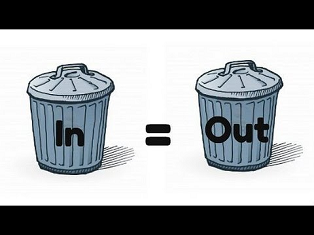
This problem will definitely impact on you as an engineering professional and it is worth looking at a few tips in handling this problem.
Tuning a plant process has the same challenges
Some of you may recall the agonies of tuning a plant with highly sophisticated programs to ensure that your P, I (and perhaps D) parameters were absolutely perfect. In fact, the operator would often spend a huge amount of time in tuning a loop and neglect the most important element in the whole process which was of course the instrument (e.g. flow meter) - which could be spitting out poor quality data to the loop controller (which then goes onto control a valve in a totally wrong fashion).
Machine Learning Is the New Kid on the Block
What is happening now – particularly in commercial organisations is the advent of machine learning applications. All these effectively represent are programs that learn how to predict a particular outcome based around (training) data in the past that they have learnt from.
One gathers good quality data - for example, parameters about the operation of a piece of equipment e.g. a compressor and also data on when it requires maintenance (the parameter we are trying to predict). One trains up the program with this data and then uses it in future to predict possible failures before they occur. The vibration gurus would laugh at this application of machine learning and exclaim that they have been doing it for decades. Absolutely right. There is nothing new under the sun !
Machine Learning is Gathering Steam
However, these applications are steadily gathering steam because of the ability to gather data (IoT), powerfully cheap computing power and the interconnectedness of everything. The problem comes in that much of the data that is being gathered is poor quality and thus it impacts on the machine learning application. Garbage in to garbage out.
Reasons for poor quality data are myriad and range from it being incorrectly gathered (sampling wrong/biased/calibration wrong) and simply human error. Other examples of poor data are handwritten notes, badly labeled data and incorrect interpretations of variables.
A Few Tips In Ensuring your Data is Useful
A few suggestions on dealing with this problem:
Ensure your objectives match up with the data you are gathering. For example, ensure the right sensors are gathering the correct data to predict a particular machine’s failure.
Build in oodles of time to clean the data and to check its integrity before you even consider processing it in a software machine learning application. You will find the time to clean the data may take up 80% of the overall time for the project. You may find you have sampled the data at the incorrect sampling frequency or to the wrong level of accuracy or there are some strange biases in the signal which need to be fixed before it is usable.
Keep an Audit Trail. Keep all your data backed up. Even the raw preliminary data. Show clearly how you have processed it into a usable format. You may find you need to go back due to some unexpected problems with your machine learning application and find out why a particular sensor reported values the way it did.
Make one Person Responsible for the data – its processing and subsequent use. This is your go-to person when there are anomalies detected or unusual results predicted with your machine learning application. This individual would know the data and the process backwards.
Independent Review. If you are handling a particularly big project – it is definitely worthwhile getting an independent expert to review the entire process of gathering data/processing/cleaning it and then applying it to a machine learning application. They may find issues you didn’t think of. Also get your operators and users of the program connected to the programming geeks and developers of the program. They may have some highly experienced insights in running the plant which you are trying to predict its performance with your machine learning application.
Conclusion
Machine learning has huge power but it should always be grounded in a common sense approach. And as a good friend of mine remarked so wisely: Common sense ain’t so common around here.
My appreciation to Thomas C.Redman of Harvard Business Review for a great article entitled: If Your Data Is Bad, Your Machine Learning Tools Are Useless. I have applied it to my experiences in process control and industrial automation and to my new passion of machine learning.
Yours in engineering learning
Steve
Mackay’s Musings – 3rd April’18 #670
125, 273 readers – www.idc-online.com/blogs/
- Details
- Written by: Steve Mackay

At a recent function for would-be students of our engineering college on the need for more of a STEM focus, I was sharply corrected by a good colleague who remarked that we should think rather of STEEM: science, technology, engineering, entrepreneurship and mathematics. And he is so absolutely right.
My take on the industrial automation industry in Australia is that we do not have enough entrepreneurial activity with a global focus. With the huge downsizing in employment at the large Australian mining and manufacturing companies, we need other entrepreneurial ventures to take up the employment slack in the engineering industries. For example, an inspirational Australian entrepreneurial company in the industrial automation sphere that I once worked for embraced this and went onto huge success globally: Citect (now part of Schneider Electric) created world-class SCADA software that took the world by storm.
The evidence of a rapidly changing jobs market is plain for everyone to see. We have known for the past two decades that there are no longer ‘jobs for life’. Now we are increasingly seeing that automation has hollowed out the number of people required in any industrial facility. Technologies that once were buzzwords are now being successfully implemented and providing huge opportunities for would-be entrepreneurs: machine learning, artificial intelligence, robotics, Internet of Things, cybersecurity, cloud computing and virtual reality.
It is thus vital that everyone jumps on board this train of entrepreneurship. We need to encourage everyone from the time they enter school to think as entrepreneurs, with a strong focus on creativity and business outcomes — and also tolerance of failure. This doesn’t necessarily mean that you should set up a business, but that you should always think of yourself as an entrepreneur — even when working for a large mining company.
Without a shadow of doubt, engineering professionals are brilliant problem-solvers; however, you need to go well beyond this to be successful as an entrepreneur with an appetite for risk-taking. Engineers often mistakenly believe that creation of the technology is the hard bit and taking the product to market is the easy part. Everyone is fixated on ‘cool ideas and technology’. However, this is a very small part of the story: commercial viability is absolutely critical, and trying to understand what the market wants is key to success.
The old adage ‘Build a better mousetrap, and the world will beat a path to your door’ is sadly not true. Powerful selling and marketing are key elements in making a product successful. Elements such as product functionality can only be gauged by engaging with the market.
The financial side of the business is also critical. Pricing the product just right is essential. The business model has to stack up and you need to have a clear idea of who your ultimate customers are and what their needs are.
With the world economy bouncing back (and mining back in vogue again), technology change accelerating and the internet reducing the barriers to entry, now is the time for Australian would-be entrepreneurs — especially in the industrial automation space — to satisfy this huge raft of new demands out there.
All the best for a barnstorming 2018. Focus on hard objectives now to ensure it exceeds all your expectations. Above all, stay healthy and stay happily personally connected.
Source Westwick-Farrow Media Process Online
- Details
- Written by: Steve Mackay
Dear Colleagues
I am always humbled by many people’s pride in what would initially appear to be a horrific job. These range from those who clean up often horrific levels of sewage and waste / work with toxic chemicals / operate on remote and harsh mine sites. You see the obvious level of pride and skill in their work coupled with a tremendous camaraderie and most importantly – a purpose in what they are doing.
And then I see some engineering professionals - often well paid with what appears to be good jobs - who absolutely hate what they are doing and make sure everyone knows how dissatisfied they are.
Why do some hate and others love
I thus puzzle why there are differences in how people approach their work. After all – it is a huge part of your life and it is best to either ‘chuck it in’ or re-assess how you approach it. A few modest suggestions on building meaning into your job.
Tie your Work to a Great Service
When you can clearly see your work leading to great outcomes for the greater good; you can be inspired to put more into it. It is thus vital to put your job into the context of what it is ultimately helping with in terms of service.
For example, we get a huge number of positive comments on a weekly basis from those who have been enriched by the courses they have attended at our college – these comments include students who have achieved promotions/enriched their communities with improved infrastructure (power stations/medical clinics) and indeed have saved lives with their acquired know-how and skills. The regular feedback of comments has definitely inspired everyone at the college – no matter what their job level - to see their jobs as considerably more meaningful than a simple nine to five activity.
Pursue Excellence in one’s Job
By insisting on focusing on a job to the highest level – you can certainly make the work considerably more meaningful and hopefully enjoyable. For example, ensuring that you are familiar with all aspects of the job and know how to deliver to the highest quality and that you are ‘top of your game’; can give huge satisfaction. Putting together strategies to improve the overall quality of the job outcomes can also be hugely positive tasks.
Work in Partnership as a Team and connect with others
Working in a team and connecting with others can be an enormous boost to one’s happiness and sense of fulfillment in the work at hand. Other strategies include understanding the contribution of others in your team as well as mentoring those starting off in their jobs. After all – it is all about people.
Remember the Nuts and Bolts of What the Job Gives you
One normally takes on a job for reasons which are quite boringly obvious but we forget this. Such as you need to earn money to pay the bills and put food on the table. Always remember that this is a key outcome of the job.

As Jim Collins remarks: It is impossible to have a great life unless it is a meaningful life. And it is very difficult to have a meaningful life without meaningful work.
Thanks for a thought provoking article by John Coleman of the Harvard Business Review (Dec.29th, 2017)
Yours in engineering learning
Steve
Mackay’s Musings – 2nd January’18 #668
125, 273 readers – www.eit.edu.au/cms/news/blog-steve-mackay
- Details
- Written by: Steve Mackay
Dear colleagues
When you are on a fixed salary in a company life is pretty certain. But in the more fraught world of consultant and contractor, life can be considerably more complex and financially tricky when dealing with contracts that require you to deliver a specific outcome. Remember if you don’t handle these correctly, you will end up considerably poorer despite putting in an enormous amount of hours working. So it is worth re-considering the different options here as discussed below.
In a simplistic way, as a contractor, you can bid for work in three ways.
Fixed price contracts. These arrangements lock you into a price. Generally, come hell or high water, whatever happens, this is the price you as the consultant or contractor get paid for delivering a specific outcome.
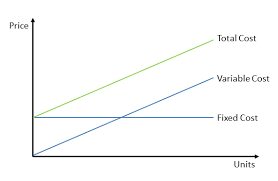
Time and materials. You get paid for both your hours spent on the job as well as the materials supplied to the client.
Two phase contract. In the first phase, you get paid on a time-and-materials basis to define the job to both yours and the client’s satisfaction and then in the second phase you actually perform the contract on a fixed price (or sometimes time and materials basis).
Fixed price can be a gamble
If you know exactly what has to be done and how long it will take and the project is actually achievable (many aren’t – particularly in software development – and I have been there a few times); then this is a great option. But if the outcomes are uncertain and the project is badly defined, you are playing with fire going for a fixed price contract. Sadly enough, many clients know exactly how difficult and risky a particular job will be and go for a fixed price and “lure” a contractor or consultant in to do the job so that the risk is removed from their lives. They are simply after a rock bottom price.
Interestingly enough on the other side of the coin, I see that many contractors go for fixed price contracts knowing full well that they will be able to “drive a bus through the contract” when it comes to negotiating at the end of the job exactly what they will get paid. We had a particularly tough case recently here with an underground tunneling contract which was fixed price (no matter what the consistency of the earth and rock was); but the contractor actually ended up getting compensated for his risk as she incurred substantial additional costs. The client wasn’t too enthused with the thought of lengthy litigation and inability to use the tunnel for an extended length of time so after jumping around for a while, paid up.
If you are forced into going for a fixed price contract and the definition of the job is still a bit uncertain, then ensure that you define exactly what you are going to provide in the contract in terms of hours and materials and some rate of compensation for when the project specifications change. You may find that if you do this precisely enough, you will end up making more money from the variations to the contract than the actual main part of the contract ! A popular strategy followed by some control system vendors who bid a very low fixed price (and thus won the job against fierce competition) with the full knowledge that the variations would compensate them handsomely. If you as the client take on these fixed prices jobs; you will have to spend an inordinate amount of time defining all the terms and conditions and contemplating all eventualities otherwise you are up for considerably more money than originally anticipated.
Sometimes fixed price contracts don’t work too well in odd ways. On one particularly acrimonious job we were advising the client on (for building a Gas Turbine power station); we defined everything extraordinarily clearly and ended up with a fixed price job. Unfortunately the contractor didn’t factor in the risk for writing the control system software and the client had an awkward choice at the end. Either let the contractor go bankrupt and not finish the power station construction or pay more money for the unexpected variations the contractor hadn’t factored in (and thus keep him in business). The client ended up paying well above the fixed price but despite this, after a few months the contractor still went bust. Resulting in the client having to complete the job with the attendant risk now shifted onto her.
Theoretically, you can claim on variations to the contract, but this is always fraught with some negotiation and angst as the client is not overly enthused with paying more. However just remember, when a variation to the contract comes up, at the earliest possible opportunity, you should bring this to the client’s attention and bill him. No matter how awkward and unpleasant this is. If you delay until the end of the contract, you will run the risk of not getting paid.
And at worse case, as a contractor / consultant if you cannot see your way for getting paid for the additional work you are doing, and can’t get agreement from the client for the unreasonable variations that are being imposed on you, simply “up stumps” (as we say in cricketing lore) and leave site. It generally never gets better. It is best to face up to the reality of the situation and avoid your losses getting considerably worse. At this point, you may find that the client can see that you are serious and is more accommodating
Sometimes it helps to compromise
Clients naturally worry that with time-and-materials contracts that they will be “taken to the cleaners” as far as the ultimate price of the job. And this is a well deserved concern. I think often unproven contractors can get lazy and simply bill for every hour. Naturally this is a short term win; as they are unlikely to be invited back on site again.
I would suggest if both client and contractor are unsure that a two phase approach is always the best. Develop and agree on a good specification where the unknowns are clarified and defined for the first phase. And then a fixed price or well considered time-and-materials proposal can be agreed on for the second phase. Let’s face it. At the end of the day, in the specialized world of engineering, it is important that we build up long term trusting relationships between client and contractor and both parties get a fair return on their investment. Not too much. But not too little. But just right.
New Fangled approaches
I worry sometimes about these new fangled approaches of alliances and partnerships between clients and contractors, rather than using fixed price or hourly rates. A bit like a partnership between God and the Devil. With superb management on both sides, they can work out. But often they end up costing one of the parties far more.
And naturally remember that unless you are an altruistic person, that it is better to not get awarded a contract if you are going to lose money on it. Finally, as Samuel Goldwyn wryly remarked: “A verbal contract isn't worth the paper it's written on”. Make sure all agreements are in writing, signed by the correct parties and can cope with project modifications.
Yours in engineering learning
Steve
Mackay’s Musings – 29th August’17 #667
125, 273 readers – www.idc-online.com/blogs/
- Details
- Written by: Steve Mackay
Dear Colleagues
I bumped into an engineering friend the other day – unfortunately he has been out of work for a number of months and is in his late fifties. He was becoming somewhat despondent about the employment situation and at his age it is undoubtedly tough. Employers are very cautious about employing engineering ‘veterans’ no matter how good they are. Unless the employers have a specific need for the specialised skill that you may have.
My take on it is that if you are idling without work; you have to work every angle you can lay your hands on to get back into employment. The longer you are out of the workforce; the harder it is to get back in.
Statistically, it is said that up to 80% of new jobs are never advertised. So what you see on the job’s website and in the newspapers are only a poor shadow of the real activity going on below the surface. Similarly, new projects and work, is often not advertised but given to existing contacts or those who the company knows about.
Unadvertised jobs include jobs that only are created when the right candidate with the right fit of skills (and attitude) comes along. Or there is an impending vacancy that will happen some time in the future and the job is thus not advertised. Or, the hiring manager, is casting around internally for someone suitable; and hasn’t got to the stage of formally advertising.
It is thus not routine practice for employers to screen resumes from strangers to find an appropriate candidate. Employers are extraordinarily risk averse these days – they are looking for a solid referral from a trusted individual who can vouch for the ability of the candidate. Sadly, the old adage is true:’It’s not what you know that matters, but who you know.’
I often hear of job candidates applying for a job, being interviewed and then never hearing anything further. They find out later that some internal candidate has then been appointed to the job (or some “mate of a mate”).
A few suggestions on getting your profile out there and enhancing your chances of securing a good job.
• Keep actively involved on all the various social networking sites especially LinkedIn (very good for professional activities) and their various job and project forums.
• Stay active and involved with your local engineering society and keep vigorously networking and attending presentations by experts
• Join forums which discuss technical topics in your area of interest. Contribute actively.
• Keep talking to all your peers in industry about current developments
• Scan newspapers, magazines and web sites for projects starting up and completing
• Keep an eye on people being employed (as advertised in New Appointments)
• And when looking at job adverts – look not only for jobs but details of new projects/services being created by companies.
• Form relationships with employers – esp. if you are turned down for a job and stay in touch for other opportunities.
• Keep talking to your chums in industry by grabbing a quick cup of coffee with them.
Good luck.
Thanks to Debra Feldman and the IEEE for an excellent article.
And remember – no matter how much you already know, as George Santayana remarks so sagely: The wisest mind has something yet to learn.

Yours in engineering learning
Steve
Mackay’s Musings – 22nd August’17 #666
125, 273 readers – www.idc-online.com/blogs/
- Details
- Written by: Steve Mackay
Dear Colleagues
As you all know – common sense is NOT so common around here when it comes to avoiding industrial failures. Often these failures are caused by avoidable (always) strategies such as good maintenance, better quality equipment and better training for staff.
Historically, a hundred years ago a telegraph problem could have disrupted a few people’s lives – however the scale today of the impact of an electrical failure (power or communications) can be huge.
Some examples of these spectacular failures (as listed in the IEEE Your Engineering Heritage: The $25 Million Ceiling Fan and the £100 Million Server by Robert Colburn) are quite laughable but were hugely painful to all involved:
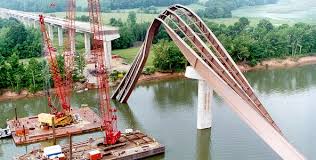
British Airways
The most recent failure which you may remember was the British Airways fiasco which probably cost the airline of the order of $120m involving a damaged computer server (and perhaps some inadequate training in remedying the problem). This caused the cancellation of all flights from two UK airports for a day causing massive irritation for stranded passengers (it was a holiday).
Newark Airport New Jersey
In January 1995, a construction crew damaged a 26kV cable (using steel piles so it was conclusively damaged) for the entire airport. Emergency generators weren’t sufficient. 70% of the flights had to be cancelled. There was a chink of a solution – two back up powercables – but they ran through the same conduit which had been damaged.So no cigar here either.
Smoke Shuts Down Airport
A few years ago, a tiny (cheap) extractor fan in a bathroom started smoking resulting in the evacuation of the entire O’Hare airport facility. A huge 800 flights were cancelled.Over reaction, perhaps.
Crashing the European Powergrid
A small drop in power to de-energise the powerline across the Ems River in Germany to allow a cruise liner to pass underneath resulted in blackouts across Europe from Poland to Morocco.Mainly because all the power supplies were on a knife edge.
Solar Storms
With the growing intensity of electrical transmission power lines throughout the world (particularly in North America and Europe), solar storms have created strange power power drop outs and impacted on delicate electronic equipment such as radar (again used for passenger flights).
What Should One Do about Preventing these Failures ?
It is always easy in retrospect to give solutions to these problems. What are good strategies to deal with these rather troubling issues ?
First of all – don’t go for the cheapest solution no matter how silly the purchase may appear. It may be a critical element in a chain of items.
Think carefully about safety and back up systems. Consider failure points of the entire system carefully.You may find something trivial could be the cause of massive failure.
Ensure staff are trained to handle typical maintenance issues and also the grand swag of unexpected contingencies with common sense and a proactive approach.
Thanks to Robert Colburn of the IEEE History Center at the Stevens Institute of Technology in Hoboken, N.J. USA.
A fabulous comment to bear in mind from William Gibson (Zero History): When you want to know how things really work, study them when they're coming apart.
Yours in engineering learning
Steve
Mackay’s Musings – 15th August’17 #665
125, 273 readers – www.idc-online.com/blogs/
- Details
- Written by: Steve Mackay
Dear Colleagues
As you all know, the global workforce is rapidly growing. And it is rapidly becoming more multicultural and multinational. We all have our own cultures, skills, behaviours and attitudes about life and work which are generally focussed on our local environment or town. However companies are increasingly straddling borders or are required to work with suppliers/clients and partners in different countries. Fortunately for some of us, the English language is becoming the key language used; but cultures and attitudes don’t line up that that easily.
I marvel at the different cultures and languages around the world and would hate to see everything crushed into one uniform Macdonalds type culture.
A few suggestions follow in boosting your positive interaction with your engineering colleagues in different countries with different cultures.
A researcher, Ms Tsedal Neeley, reckons there are five attributes you require to successfully work in this new environment. These are:
Delight in Positive Indifference
Ignore cultural differences that may impact on you. In fact, consider them irrelevant and a non-event.
Look for Common Features in Different Cultures
When working with people from different cultures look for examples of similarities. For example, you may find both Japanese and American cultures embrace efficiency and productivity. Whereas Indian and Italian love good food and style.
When Thinking of your Multinational Company focus on the Global Company rather than individual offices.
Look at the values and goals of the global company rather than local nuances and issues.
Actively seek out Interaction with Other Cultures in Distant offices.
The trick is to welcome interactions and to thrive on them especially when they are totally different cultures. Consider them enriching you. This heightened level of interaction does tend to build trust and improve mutual understanding of how each party works.
Aim for Your Global Engineering Career rather than a Local One.
Working as an expat used to be unusual. Today, one should aspire to working in different countries as part of a global engineering career.
Thanks to a lovely article written by Tsedal Neeley entitled: How to Successfully Work Across Countries, Languages, and Cultures
In support of this, the famous car manufacturer CEO, Carlos Ghosn, remarked: More and more, in any company, managers are dealing with different cultures. Companies are going global, but the teams are being divided and scattered all over the planet.
Yours in engineering learning
Steve
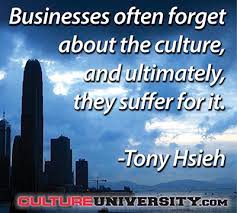
Mackay’s Musings – 8th August’17 #664
125, 273 readers – www.idc-online.com/blogs/
- Details
- Written by: Steve Mackay
Dear Colleagues
In the past few years; we have seen some spectacular collapses of buildings and bridges. This is quite inexplicable to today’s structural designer and engineer who puts enormous effort into the careful use of materials and huge safety margins. In addition, it is not only about care in design but also in putting into place monitoring mechanisms for the life of the structure.
However, when a designer is operating at the limit of their expertise; mistakes still occur. One of the questions with the Deepwater Horizon oil rig which exploded with massive damage was in the use of cement (coupled with nitrogen gas) a few kms under the seabed – as to whether it did indeed have the strength required to prevent a massive gas and oil surge. As we know, cement as a proven structural material has been around since Roman times – but for perhaps more predictable environments.
The typical approach a structural engineer follows when assessing materials for safe use and which would give some background to the building you live in, is as follows.
Lab Testing
All materials used are extensively lab tested to determine their structural properties such as tension and compression under loading. The design strength actually used is considerably lower than these figures.
Design Strength Varies Depending on Materials
The calculation of design strength varies from concrete and steel which are fairly predictable and of uniform quality to wood which is rather varied. Wood is considerably more variable in strength as it could have an unusual number of knots or come from a diseased tree. Thus the safety margin has to be considerably higher.
For example, the Douglas fir, has a safety margin of 5.5 (versus 1.4 for Steel). For example, Douglas fir has a compression maximum strength of 51 MPa (7430 psi) and based on the safety margin of 5.5; a design strength of 9.3MPa (1350 psi).
However, (as we know from the Twin Towers disaster) steel can have problems for structural support. As you may recall it is weak in fires and must be protected in all buildings.
Additional Safety Margins
Structural engineers build in additional safety margins by overestimating the dead and live loads and selecting supports one size up from what the design suggests.
Beware when you are at the Limits of Technology
However, despite all this care; you have to be careful about operating at the limits of technology and as to whether you will see sudden loads well in excess of what you designed (DeepWater Horizon) or indeed, your materials exposed to conditions they were never designed for (Twin Towers).

Try and Anticipate What Happens in the Future
In Africa recently, there have been a few spectacular bridge collapses where it would appear that the corrosion of the reinforcing structures were a cause of a weakening of the structure. Coupled with theft of reinforcing steel. The last is hard to understand but this is what was reported.
In essence, what I am saying is that even with considerable planning and design expertise taking into account the relevant safety margins, all structures should be monitored throughout their lives. With today’s technology and of course internet connectivity, this is surely achievable without too much expense.
Thanks to 101 Things I learned in Engineering School by John Kuprenas with Matthew Frederick.
Andrew Heller makes an interesting point: Technology is like a fish. The longer it stays on the shelf, the less desirable it becomes.
Yours in engineering learning
Steve
Mackay’s Musings – 25th July’17 #662
125, 273 readers – www.idc-online.com/blogs/
- Details
- Written by: Steve Mackay
Dear Colleagues
As an old pal of mine, once remarked about his career: ‘Find out what you enjoy doing which adds value to other peoples’ lives and never ever work again’. What he was saying is that if you can do something at work which gives you meaning to your life and which you truly enjoy; you really have a great job which is the same as your hobby.

Corporations Spend Millions
Corporations spend millions of dollars on trying to motivate their staff and give them meaning to their work. One only needs to think of hospitals instilling the need to be caring about other people and a well known car company who promotes safety. However, this spirit of meaning, tends to disappear when engaged in the daily grind of work.
There is no doubt that if you feel there is an inner purpose to your job and you feel very satisfied in it that you will stick around it a lot longer and really strive to add value to what you do everyday.
Certainly, I would find it difficult working on a daily basis underground in a dangerous coal mine to find any inner purpose in what I do every day besides keeping myself healthy and extracting lots of money for my daily work. Perhaps, an inner purpose or meaning doesn’t apply to certain jobs.
How do you identify your inner purpose at work ?
A few questions to ask yourself and your colleagues in establishing a inner purpose to a job:
What do you really enjoy doing ? What do you look forward to doing at home or at work ? What gets you energised, passionate and enthusiastic about being engaged in ? What would you eliminate from your job and what would you emphasise and add to make it even more enjoyable?
What do you excel at ? What tasks do you do extraordinarily well at ? What do people sit up nd notice about you and always comment at how well you do it ?
Where do you feel that you add value and contribute to the organisation ?
Who do you enjoy working with and who do you create superb synergies with ?
Examples
Some examples of colleagues who tell me that they have meaningful jobs
Glenn is an engineer who thrives on working in plant design and optimising tough areas with significant problems. He believes his inner purpose is to build plants which are trouble free, highly efficient, safe and run forever.
Rodney is an accomplished instructor and loves teaching process instrumentation and control. He believes his inner purpose is to upskill others so that they can be more valuable in their careers and enjoy themselves more.
Remember as T.F. Hodge says: ‘Day or night, good or bad…all things from within.’
Thanks to Kristi Hedges who wrote the very interesting: 5 Questions to Help Your Employees Find Their Inner Purpose at the Harvard Business Review.
Yours in engineering learning
Steve
Mackay’s Musings – 18th July’17 #661
125, 273 readers – www.idc-online.com/blogs/
- Details
- Written by: Steve Mackay
Dear Colleagues
Ferocious and violent arguments are the part of life in engineering. Needless to say, they are rarely productive. And often very damaging to relationships and self esteem. A few suggestions on breaking an argument in its tracks and focussing on positive productive outcomes follows….
An Argument over Defective Software
I have been involved in many meaningless arguments which have got heated and always regretted the unproductivity of them all. I remember having a vigorous exchange of views on testing control software for a large gas-fired power station. The project manager didn’t believe a black start was necessary to test the software in its entirety as he felt it (the software) was fine in the preliminary tests. I didn’t trust the software and wanted to do a thorough and meticulous test under real world conditions.
This resulted in such an acrimonious exchange between me and the project manager that we forgot to pay the bill for the café we were arguing in. Much to our huge embarrassment. This cooled the argument down dramatically once the waitress accused us of avoiding payment for our meal. Fortunately, I won the argument and we did test the software and it was confirmed that it was catastrophically defective. However we could have got there without a huge argument – something which damaged our professional relationship for many months.
Productive Conflict is Good
Personally, I believe productive conflict is a good thing. In any business, you don’t want everyone agreeing and ‘walking into the sunset together’. It is vital that everyone has a strong professionally-based viewpoint and we then iterate to the best solution. However, the process in arriving at this best solution can often result in an acrimonious argument.
What often happens is that in the haste to respond to someone, no reference is made to what the other person has said. Instead, you simply jump to your position and ignore all mention of what the other person has said. You often see this when a politician is being interviewed - possibly in a confrontational way. Rather than answer a specific question or respond to a specific point, the politician simply jumps to what they want to say. (Which is often of no relevance to the topic under consideration at all).
Once this process starts, it simply cascades into a violent quick interchange of views. And it is rarely productive. Often it descends to personal attacks or slights on the other party’s team. Body language can play a significant role where you turn your back on the offending person and face those who support you.
The Trick
I believe the trick to defuse this situation is to acknowledge what the other person has said -but in a positive way. And to focus unerringly on the problem under consideration by restating it clearly and simply again. This can be hugely painful for you but it does start defusing the argument very quickly as the other person would be surprised and perhaps, even pleased that you are taking their point into account.
I have found on occasion that the process of restating the problem takes most of the heat out of the argument as all parties often didn’t quite understand what it was. And were too keen to get at each other throats. We also didn’t have a moment to consider the other person’s position.
Occasionally, I have found someone has a malicious intent and are being deliberately argumentative. This is however rare. Your sincerity and enthusiasm for transparency and an open solution can often win this person over. Esp. if they are surrounded by others who want to do the right thing.

Suggestions Suggestions on Quickly Resolving the Argument….
Emphasise that you want to hear the other perspectives to an argument, you value everyone’s input and you want to focus on the issues in arriving at the best outcome.
Emphasise this again and again to re-assure everyone else. Always repeat what the other parties have said to confirm your understanding of what this position is.
Dig deep down into yourself and ensure that you also agree with the requirement to come up with the best outcome – meaning that your particular argument actually may not be the best and you may have to accommodate someone else’s suggestion. This realization is ofen very painful. But there is no point in winning an argument and then to come up with a poor solution. Everyone loses in this situation.
Also try and use lateral thinking to come up with innovative approaches that may resolve the argument and be acceptable to everyone - but more importantly – represent the optimum solution to the problem.
Good language to use
Some phrases you may use in defusing an acrimonious exchange:
‘This is a vital issue and I welcome all points of view.
We are looking for the best solution.
We need to focus on the issues…
That was a brave/innovative/gutsy/clever suggestion.
We need to all think differently in coming up with solutions – that is how we arrive at the best solution.’
And then….
‘I respect the other points of view but I am not enthusiastic about this approach because this is my thinking on the issue…..I welcome your perspective on what I have said as we focus on the best solution.’
The Best Will Out
If you focus on the best outcomes and keep transparent and open in your discussions, you can surely avoid an acrimonious exchange and build partnerships and bridges with your peers.
Watch out though that you don’t all start thinking the same way with no differences and end up with ‘Group Think’ (everyone mindlessly agreeing and taking a hazardous decision as a result) situations…which is perhaps even worse than having an acrimonious argument as it could result in dangerous outcomes.
Thanks to Liane Davey who wrote an interesting article in HBR entitled: When an Argument Gets Too Heated, Here’s What to Say. I have adapted it to engineering professionals.
An ancient poet, Rumi wrote: ‘Raise your words, not your voice. It is rain that grows flowers, not thunder.’
Yours in engineering learning
Steve
Mackay’s Musings – 11th July’17 #660
125, 273 readers – www.idc-online.com/blogs/
- Details
- Written by: Steve Mackay
Dear Colleagues
As you bump (race?) up the ladder of an organization, keeping a journal can be really useful. No, I am not referring to making an accounting journal entry but a ‘diary entry’ as we in the Commonwealth English speaking world often refer to it. Or in shipping parlance, sometimes referred to as the ‘captain’s log’.
Journals can be Really Useful
Journals are useful for two reasons, I believe: firstly, to cover yourself when there are disagreements about what really happened some time back – and secondly (more importantly) – to be able replay back events some time later where you can ponder why things turned out as they did. And perhaps to help drive improvements in what you do and to track how you are progressing towards your overall plan for the business or your career.
The best thinking comes from structured reflection using your journal as a tool to peruse what actually happened. Replaying events later is crucial to our learning about a particular experience.
Naturally, there is the hope that you are performing your work to the highest level of professionalism – and this will always be evidenced in your interesting and objective journal entries.
Writing a Journal
Five to ten minutes should be all that is required to enter what happened during the day in brief abbreviated English. When writing – try and put the perspective of the other parties in your day-to-day activities and ask the question “why’ repeatedly to identify why things turned as they did.
Try and look at the journal entry against what you were planning to do that day.
Journals should not only keep a record of what happened but also emotions and tense comments that were made at the time. In as objective and dispassionate way as possible.
Remember that writing up your journal as soon after the day is over is best as the memory slowly starts changing what you remember. And this is what is so great about a journal – when you look back a year later – you will be surprised at the contrast between what you remembered happened and your actual record of the event.
Always write a journal bearing in mind that someone unknown may read it later. It may be describing your meeting on the structural supports for a bridge which later collapsed. Your memory and details may be critical in a subsequent court case or legal dispute.
Why do we avoid making journals entries?
Engineering types tend to often avoid putting journal entries together as writing skills aren’t always a preferred activity. We also believe it can take a huge amount out of our day doing something we often believe is unproductive time. One is often hard pressed to justify the time. And, writing a journal on a particularly painful or complex event can also be really hard work dissecting the precise sequence of events.

Persistence is the way to go
My suggestion is to try and write a daily journal and take stock again after six months. It will definitely be a worth endeavour.
In writing a journal, keep Blaise Pascal’s comment in mind: ‘I made this letter longer than usual because I lack the time to make it short.’
Thanks to Dan Ciampa for a great article which I adapted entitled: The More Senior Your Job Title, the More You Need to Keep a Journal in the Harvard Business Review
Yours in engineering learning
Steve
Mackay’s Musings – 4th July’17 #659
125, 273 readers – www.idc-online.com/blogs/
- Details
- Written by: Steve Mackay
Dear Colleagues
I was fascinated but not surprised about the impact you can make on reducing crime in your local area – simply by being more entrepreneurial and opening a local retail or manufacturing business. Well - any business where people are employed and clients visit you.
Recent Research
Worldwide, there has been an uptick in mixed use development – combining residential and commercial properties in the same area. This makes it an easier commute and strengthens the local character.
Some interesting recent research showed that when retail establishments in Los Angeles were closed, crime jumped in these areas. Typical crimes that were reduced with people meandering about (i.e. foot traffic) are the usual ones - car and home break-ins.
People do speculate that certain businesses attract crime but this is especially not evident in this study (where medical marijuana dispensaries were shut down – Yes !). Similar patterns were shown for restaurants that were shut down – crime jumped with the absence of people circulating on the streets. Foot traffic provides free and casual surveillance. Naturally enough, you would say that the additional foot traffic in a neighbourhood actually provides additional thieves but this is not borne out with this research.
One key factor common to retail establishments, whether marijuana dispensaries or restaurants, is that they generate foot traffic. And with foot traffic comes informal surveillance. The researchers calculated that a retail business such as your local restaurant or supermarket typically cuts out a huge $US30,000 pa in local burglaries and theft.
So having additional ‘eyes on the street’ (as Jane Jacobs remarked in her book The Death and Life of Great American Cities) makes a huge difference to crime.

Build and They Will Come
So build your next engineering business close to a residential area. You will be doing a huge favour to local home owners in terms of reducing crime and helping your community cut down on policing (and indeed in hospital) costs. And, of course, in providing jobs.
Thanks to Professors Tom Y.Chang and Mireille Jacobson for reporting on their research in the Harvard Business Review entitled: Research: When a Retail Store Closes, Crime Increases Around It.
Rudy Giuliani makes a good point: It's about time law enforcement got as organized as organized crime.
Yours in engineering learning
Steve
Mackay’s Musings – 27th June’17 #658
125, 273 readers – www.idc-online.com/blogs/
- Details
- Written by: Steve Mackay
Dear Colleagues
We all know that habits can be powerful in achieving great things (e.g. timekeeping or exercising/studying regularly) or descending into the depths (smoking, drinking or eating too much).When we think of habits, I guess we mainly think of the latter ones. And once you have a bad habit, it is verily a devil to break out of.
Some really great suggestions for good habits are listed below in helping to write great code but they actually apply to any part of working on an engineering project.
The reason why I mention these habits now is that I have been undertaking a Python programming course to undertake some probably ambitious engineering software projects.
They can be broken down into three areas….
- Team work
- Writing of code
- Commissioning and Maintenance
Teamwork
- Finish the Project as Planned
Stick to your original plan and finish the project on time and to the right level of quality. It is easy to slip or abandon your part of a coding project. Doing your part means that the team is supported in the overall project schedule of deliverables. It is always particularly easy to abandon a software project and move onto other things when the going gets tough.
- Ensure your Project is workable
Often engineers go along with an obviously unworkable project plan. Raise your objections early on to the team and manager when mapping out the project. Leaving this to later, means a lot more pain and frustration.
- Work with the Team; not in Solitary Desolation
Working as a team and communicating vigorously with each other is critical to the success of the project. Lurching off on your own is a recipe for poor outcomes in the project or perhaps even a disaster.
- Blaming Every Other punter but yourself
Be honest about your mistakes and take ownership of your work. Come up with solutions to problems rather than listing them and then sitting back expecting someone else to fix ‘em.
- Share your knowledge and experiences freely
Be totally transparent and free with everything you learn and know. This makes you one of respected members of the team who has a fearsome reputation for openness and generosity.
- Don’t Reinvent the Wheel
Don’t be afraid to use other solutions or approaches created by others. Trying to do everything your way costs more and takes longer especially when you consider debugging time. Keep your work and coding to the standards used in the team. Don’t create your own no matter how much you enjoy creating new templates and styles.
Writing of Code
- Fix It Later
Often you simply don’t have the time to do an immediate fix; but you need a solid system to record what the problem is and what is required. So that it isn’t forgotten.
- One Liners Don’t work – Readable Code is the Key
Often programmers delight in writing tight code which compresses say, 20 lines into one line. But of course it is then totally unreadable to anyone following on later. Someone has to maintain your code or work on it later and you need to think of others coming along later who have to maintain your work. Optimising for the sake of optimising is also a waste of time unless there are real benefits.
- Don’t hide Problems
It is best to confront problems when they occur and to deal with them in the best way possible. Ranging from changing a PLC rack because you have undersized the number of I/O or remedying defective code now rather than later when it will cost much more.
- Ensure Documentation and Naming Conventions are Top Class
Too many engineering professionals shy away from good documentation of a program and of naming variables and function names so that they are logical and help with understanding the program. Document and focus on good naming practices.
- Thrive on Best Practice
There are always best practices you can apply in your project. For programming it may be code reviews, test-driven development and good QA practices. They may be more arduous and take longer but they have been designed by veterans who have built them with oodles of experience.
- Apply the Right Tool for the Job
Often we get comfortable with a particular software tool (e.g. the XYZ editor) which may be brilliant for one programming language or project but total inappropriate for another. Learn and accept new ways of doing things even though these changes are often painful.
- Try and Generalise Code
Often I find code with a ferocious amount of hard coded values in them (e.g. for timers and counters). Think of making things configurable so that you make rapid changes with a simple data configuration file tweak rather than rewriting of wide swathes of code.
- Randomly Copying Code
Often you have to copy a chunk of code from another project into your program. Inevitably, after a glance you don’t understand how it works but as you are in a rush you simply copy it across. While this may be a short term fix; you may find it creates long term problems with unexpected results as you didn’t understand it. So best to invest the time in understanding it and ensuring it is 100% appropriate for your program or to make adjustments to it early on.
- Never Trust Anything
My favourite Robert de Niro quotation is: When there is any doubt, there is no doubt. Never trust anything you have put together without testing it thoroughly. You may have written it and think it is unsurpassed in its brilliance but believe me – until you have tested it – never assume it works properly.
- Never fear asking for Help
When work is tough and you are having difficulty understanding something or solving a particularly tough problem – persist and then ask for help. Most people are delighted to be able to help you.
- Remember peripheral but critical issues
Naturally, you are writing code to solve a particular problem. However, there are other perhaps peripheral issues which you need to think about such as cybersecurity, aesthetics and overall performance which may impact on you later. Think of them as well in writing your code.

Thanks to a great article about writing code which stirred some enthusiasm in my flagging efforts in using Python by Christian Maioli on Codementor.io web site entitled: 35 habits that make you write bad code.
Yours in engineering learning
Steve
Mackay’s Musings – 20th June’17 #657
125, 273 readers – www.idc-online.com/blogs/
- Details
- Written by: Steve Mackay
Dear Colleagues
I notice with faint amusement that Intel announced last week (rather too confidently) that ‘Self-driving cars will add $7 trillion a year to global economy by 2050’. As one less-than-impressed punter remarked: This was presumably said to boost Intel shares.
What is the impact on us as engineering professionals?

Here we go again – ‘Massive Business Opportunities’
The move to the driverless future reminds me of a comment made by another colleague commenting on the confident prediction of the paperless office in the eighties (because at this time everything was being computerised from paper-based systems). He rightly noted that we are as close to the paperless office as we are to the paperless toilet.
And surely enough at this time – with the advent of computerisation - there was a huge surge (no decline whatsoever) in paper consumption because of easy access to computer-connected printers (and presumably other reasons such as the massive increase in regulations requiring records of everything to be kept – so called ‘paperwork’).
It is only some 30 years later with huge changes in technology (e.g. smartphones and tablets) that I believe there has been a huge drop off in office paper consumption. I believe the same will be true of the self-driving car. Many predictions of imminent changes but these may be off by a few decades. As the remarkable investor Howard Buffet remarked: Timing is always the hardest thing to get right when investing for the future.
The ‘Passenger’ Economy
The concept which Intel has been promoting is that huge new businesses will rapidly form because of car drivers soon having ferocious amounts of time available now that they are not controlling a steering wheel any longer. An estimate of the additional time available to people is 250m hours per year.
Typical activities for people sitting in driverless cars would include watching movies and playing games. Unusual suggestions for new businesses include mobile beauty salons and health clinics. People will no doubt increasingly abandon owning a car and will summon them when required. One can already see this in many cities where you only pay for a car when you use it.
Other suggestions are that driverless cars would go to consumers to provide a portable restaurant experience. Naturally, freight and deliveries would now be conducted 24 hours a day/7 days a week. Recharging farms would be needed for provisioning electric vehicles with power and parking space.
But the Main Concept is Probably not directly about cars
The key opportunities will be created not directly by driverless cars but by the technologies and businesses that arise from this change in life style. For example, in replacing car sales, maintenance, repairs, crash repairs, insurance, refuelling and space for a garage.
Horrible Deaths May be Lower
The typical statistic that is thrown around is that there are over a million deaths per year worldwide due to car crashes. Autonomous cars should make a huge dent on this huge toll. Something that hasn’t really been considered is the Law of Unexpected Consequences arising from when the death toll is reduced insurance drops dramatically, repair smash repair yards go out of business, funeral parlours experience a significant drop in their business and trauma hospitals and counselling services aren’t as busy etc.
Ultimately, everything is driven by costs and perceived value. You either pay considerably less or think that you are getting considerably more value for your experience. This will thus drive this industry to some dramatic changes.
The shift is cost driven, you either pay a lot less or you get a lot more for the same money. It's also more convenient not to deal with maintenance, refueling, parking .. or owning a garage. And more flexibility as you can ride in different types of vehicles, according to one's needs at a given time.
When will this change occur ?
I suspect there will be the usual concerns and screaming for more regulations because of safety concerns with self-driving cars that drive amok. There will be a huge number of sceptics about this change. But surely within the next decade we will start seeing a growing impact from these autonomous cars in our cities.And perhaps not merely on the road but finally autonomous vehicles in the air as well…….
Seize the Opportunities today
As an engineering professional – it is clear that no matter what industry you are in – these opportunities are worth while grabbing. Pause for a moment and consider what you can do?
Gary Shapiro, president and CEO, CTA remarked (quite humorously, I thought): “If you asked Americans back in the early 1900s their opinions about daily transportation needs, they’d have said they wanted faster horses that ate less food!”
Yours in engineering learning
Steve
Mackay’s Musings – 6th June’17 #655
125, 273 readers – www.idc-online.com/blogs/
- Details
- Written by: Steve Mackay
Dear Colleagues
Great engineering careers aren’t built around sudden inspiration, profound insight or even incredible technical abilities. I believe they are built around an average person doing ordinary things extraordinarily well coupled with huge persistence and patience.
A good example of an ordina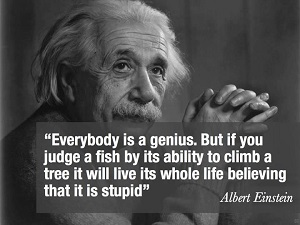 ry person who did well in engineering and in the military is General Dwight Eisenhower (who later became – arguably a good president). He was an average performer in his engineering class at West Point Academy; apparently possessing a fairly average IQ. Although apparently he really enjoyed the typical emphasis of engineering on physics and mathematics. He wasn’t regarded as someone destined for great things. And yet he presided over one of the greatest armadas the world has seen - the D-Day Landings in Normandy, France on the 6th May 1944 to liberate Europe.
ry person who did well in engineering and in the military is General Dwight Eisenhower (who later became – arguably a good president). He was an average performer in his engineering class at West Point Academy; apparently possessing a fairly average IQ. Although apparently he really enjoyed the typical emphasis of engineering on physics and mathematics. He wasn’t regarded as someone destined for great things. And yet he presided over one of the greatest armadas the world has seen - the D-Day Landings in Normandy, France on the 6th May 1944 to liberate Europe.
He did have three really great qualities though.
- He Worked Particularly Hard
He persisted with every task until he had it right. He was dedicated to doing things on time to a high level of quality. He didn’t tolerate poor outcomes but patiently worked to achieve a high quality outcome in everything he did.
- He didn’t sweat the ‘small stuff’ but focussed on what mattered
Many of us work ferociously hard on often trivial tasks which probably aren’t critical to a great outcome. Eisenhower calmly assessed what were the important things and focussed on achieving great outcomes from them.
As you may recall – the D-Day landings in Normandy depended to a huge extent on good weather This was a huge task transporting an enormous volume of material and men across the English Channel in a very short time. Despite the rain pelting down the night before the landings, he trusted his meteorologist to make the right prediction of good weather for the landings and gave the order to ‘Go’. As it turned out – the weather was fine and his assessment here was spot on. There were many other issues that he could have been distracted by; but he looked at the key elements for success. Eisenhower thus focussed on the key leverage points to make for a great outcome.
- He Worked with Good People
Eisenhower never worked with people who were unreliable, ineffective or untrustworthy but always were the best. He trusted these people’s advice and depended on them to do the right thing. He never tolerated poor performers or people who didn’t achieve great outcomes.
Conclusion
The great thing from all of this is that someone fairly average achieved such amazing things in his engineering and military career by focussing on three critical skills. This is certainly inspirational to me and perhaps you.
Erica Jong makes an excellent point: Everyone has talent. What's rare is the courage to follow it to the dark places where it leads.
Thanks for Stephen Ambrose' excellent biography of President Dwight Eisenhower and to the ever thoughtful Dr Philip E. Humbert for his assessment of life skills we need for success.
Yours in engineering learning
Steve
Mackay’s Musings – 30th May’17 #654
125, 273 readers – www.idc-online.com/blogs/
- Details
- Written by: Steve Mackay
Dear Colleagues,
If you look at the results of most economists, financiers and journalists you will see that their prognostications are never particularly good at predicting the future. It is nevertheless tempting to make a few suggestions about the future of oil and electric vehicles as solid trends are now emerging. Ultimately everything is driven by price - and oil and electricity is certainly no exception.
As engineering professionals you are certainly going to be impacted by the changeover from oil driven cars to electric over the next few years. How can you prepare yourself to take advantage of these huge opportunities ?
Two Observations are Notable Today
The first one is the collapse in previously strong power utilities from monolithic highly profitable entities to often shadows of what they were before – mainly because of the massive growth in solar energy in homes and other independent producers. This process of the weakening of the power utilities is often referred to as the power utility ‘death spiral’. As more households provide their own power and thus reduce their consumption of electricity from the utility; the utility responds to the overall drop in power consumption by increasing their prices. This in turn, drives homes to increase their solar energy installations further to reduce their reliance on the (often government owned) utility.
The second item is the incredibly swift (Elon Musk of Tesla reckons it is still slow growth) growth of electric or hybrid cars in the Western World. When my young programmer nephew puts a deposit down for an electric car, I know things are changing.

Predictions, predictions…
Fitch (the investor ratings agency) refers to the ‘investor death spiral’ for companies that don’t adjust to the rapid change from oil fuelled cars to electric and the impact it will have on previously solid businesses.
The suggestion is that over half of global oil demand is driven by transport (Bloomberg). I have heard other numbers saying that 25% of global oil demand is for cars. I am not quite sure of the actual numbers here – probably a guestimate somewhere in between.
Oil majors such as BP are now saying that the pick up in electric vehicles will be swift with an estimated 100m electric cars in 2035 (as opposed to an earlier estimate of 57m). Shell says the majority of cars on the road by 2030 will be electric. Amazing numbers from oil companies.
Are these estimates correct ? Who knows ?
But one thing is for sure – even with 5% or 10% of the mix of cars being electric and a big chunk of households using solar – this will have a major impact on the consumption of oil and coal and the way we conduct our lives.
As Engineering Professionals Prepare yourself for Change – they are definitely a’coming
One immediate impact is the huge increase in electric power consumption as opposed to that of oil and coal. Will this save the bacon of the traditional power utilities ? Perhaps.
From an engineering point of view – recharging of cars will place a huge load on the existing grid and local distribution network. For example, it is estimated that even six closely located vehicles charging together at peak times (e.g. a wintry evening in Europe or a ferociously hot day in Australia); could lead to local brown outs.
Surely a few of the great challenges and opportunities for engineering professionals such as yourselves.
Elon Musk makes encouraging noises:I really do encourage other manufacturers to bring electric cars to market. It's a good thing, and they need to bring it to market and keep iterating and improving and make better and better electric cars, and that's what going to result in humanity achieving a sustainable transport future. I wish it was growing faster than it is.
Yours in engineering learning
Steve
Mackay’s Musings – 23rd May’17 #653
125, 273 readers – www.idc-online.com/blogs/
- Details
- Written by: Steve Mackay
Dear Colleagues
No matter how small or big one’s business is – we often tend to be obsessed with what our competition is doing. Naturally, this is all about staying in business and based around the thinking that if you ignore your competition; they may steal opportunities away from you and then who knows what could happen.
Competition could be a simple as another electrician providing similar installation services to you or perhaps, a fast growing engineering design consultancy with similar services to what your firm offers to thousands of clients throughout the world.
However, a point made by the strategist, Tara-Nicolle Nelson, is that this focus on one’s competitors is too distracting – we should be unerringly focused on solving our customers’ day-to-day challenges and problems. By paying all our attention to our customer, the thinking goes, we will uncover unique solutions to their problems and thus our business will flourish. If we are concerned about what our competition is doing – we could end up becoming clones of them or pursuing issues which they may mistakenly believe are important and their clients couldn’t care less about.
Who is your Competition?
So, in reality, your competition is essentially every challenge your customer is facing in the area in which you operate. Your customer isn’t obsessed with who your competitors are but how they can effectively tackle the problems they are currently facing.
An Example
For example, if you are a control systems integrator providing process control services in the mineral processing area, you will probably keep a weather eye on who else is offering these services and what they are currently doing. However, it would be better to focus on the day-to-day problems your customers are having in this area and working out ways to help them more effectively and affordably. For example, your competitors may be working on launching new control hardware which a particular set of clients isn’t that interested in. These clients may be more worried about some awkward process problems caused by more stringent environmental regulations which they are wrestling with.
Without a Doubt
There is always a basic requirement to understand what one’s competitors are doing and how their products are addressing the market. But avoid becoming a ‘me too’ company.
A few suggestions on applying this to your business strategies:
- Don’t obsess with competition but on what your clients’ problems and challenges are.
- Rethink your product or service into what the clients’ challenges are.
- Visualise your clients as real people primarily with real challenges which require effective solutions.
Ben Cohen, Co-Founder Ben & Jerry's remarked: "There is a spiritual aspect to our lives -- when we give, we receive -- when a business does something good for somebody, that somebody feels good about them!"
Thanks to Tara-Nicolle Nelson for an interesting article entitled: Obsess Over Your Customers, Not Your Rivals in the Harvard Business Review.

Yours in engineering learning
Steve
Mackay’s Musings – 16th May’17 #652
125, 273 readers – www.idc-online.com/blogs/stevemackay
- Details
- Written by: James Mackay
Dr Steve Mackay and Ms Edwina Ross met with Engineers Australia on the morning of the 28th March. Emmanuelle Wintergerst, their National Manager for Skills Assessment, outlined the process for those wishing to work and reside in Australia. It is summarised here: To have your qualifications assessed by Engineers Australia, the following options are available:
- If you need an assessment to gain eligibility for a Skilled Migrant visa, the following link will guide you through the process: https://www.engineersaustralia.org.au/For-Migrants/Migration-Skills-Assessment/MSA-StepByStep-Guide
- If you wish to become a member of Engineers Australia you will need to have your eligibility assessed (Stage 1 assessment): https://www.engineersaustralia.org.au/Membership/Assessment-Of-Qualifications-And-Competencies
After acquiring our Master of Engineering (Industrial Automation), Engineers Australia will require the following if you would like them to assess you:
- All academic documents
- ID
- CV/resume
- Employment references and associated documents
- Three essays/reports detailing three work projects completed during your career or during your studies.
(The links above contain instructions for writing the essays/reports.) *Note that the process is quite similar for both streams of assessment mentioned above. Furthermore, the standards of competencies to be assessed against are identical. For general information about visas, points-based visas and SkillSelect the website for the Australian Government Department of Immigration and Border Protection (DIBP) will be of assistance.
- Details
- Written by: Steve Mackay
Dear Colleagues
I believe there are many of you – in common with me - who have accepted a new job or task and then regretted it afterwards. In my case, I recall a particularly well paying engineering job giving me huge opportunities in a growing area of engineering (industrial automation). However, the company was dysfunctional, treated their clients with disrespect, never delivered on promises and my boss was dictatorial and made poor decisions. It put huge pressure on me and after a year of persisting with this, I quit in disgust (mainly because I had made a poor decision in joining them in the first place). Needless to say, this particular company has long since disappeared.
I should have asked myself four questions before I signed on with them. It is important to understand how extrinsic (e.g. money, fame) and intrinsic motivators (e.g. satisfaction – internal drivers) are tweaking your decisions.

These four questions are:
1.What is the real driver for your decision to take on a new job
If it is simply about money but you are going to be working in a ghastly location and doing horrendous work; then clearly assess for how long you can tolerate it. Or set a finite time limit to how long you will take the job. Money only correlates with deep job satisfaction a very small part of the time. Perhaps, you don’t have a choice as you need the money and your creditors are snapping at your heels?
If you are deeply interested in a particular project or job; you are likely to be highly committed and happy in the role. But if the driver is money or another extrinsic motivator; it may not be such a good decision. Be careful thus to disentangle extrinsic with intrinsic motivators.
2.Does the task or job align with your values
Some time ago, I volunteered for a local engineering association in helping them with a conference. It was close to one of my values in volunteering and supporting the local community but it ended up sucking up a huge amount of time as the other volunteers disappeared when the workload ramped up. Plus we had minimal support from the engineering association in putting on what was a hugely successful event. However, it destroyed the little time I had with my young kids and family and was a source of great regret as one of my values is spending quality time with the family.
So weigh up these tasks carefully to ensure you end up doing the right thing by your values.
3.Is there really a choice you can make?
Obviously you need a salary to pay the bills and bring up your family. But do you really need to put in ferocious hours to a particular job over weekends or to travel a huge amount or do you have real choice here? You may find you can reduce your travel and still achieve the same objectives or delegate someone else to go in your place. We often think we don’t have choices when in reality we do.
One aspect of a fulfilled life is having control of this life. Now I know, we could get seriously ill or have something else nasty happen to us – all out of our control. But we have to try and exert control over what we do as far as possible. Otherwise you have a job out of control and a source of great pain.
4.Will you be successful in the role with real outcomes
Perhaps one should put this as the first consideration to make. But are you sure that technically and resource wise you are able to handle the new job and produce a successful outcome? I have undertaken assignments before where I have been very disappointed with my results and have seriously regretting doing the work.
One task I took on and which I found fascinating (designing and setting up a data acquisition system for a large installation) was brilliant but I had no time to undertake the job as I had a full time operational job to run at the same time. Impossible conflict of time.
Conclusion
So my modest suggestion is to consider these issues above before taking the plunge into a new job or project.
Confucius is so right when he observed: Choose a job you love, and you will never have to work a day in your life.
Thanks to Regan Walsh for an interesting article in the Harvard Business Review entitled: Before You Agree to Take on New Work, Ask 3 Questions
Yours in engineering learning
Steve
Mackay’s Musings – 9th May17 #651
125, 273 readers – www.idc-online.com/blogs/stevemackay
- Details
- Written by: Steve Mackay
Dear Colleagues
We are all keen for our teams to be more successful and innovative. This requires your team to be supremely experimental and enthused with constantly trying new approaches – probably showing significant levels of energy in doing this. But as engineering professionals, we are often also anxious about excessive risk and failure and thus try and steer our guys away from this experimental approach. All seemingly a gigantic contradiction.
Obviously, if you are dealing with highly critical safety issues, the last thing on your mind is to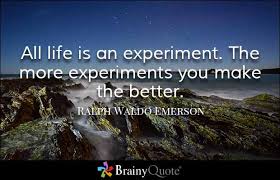 take risks and experiment. However, if you are developing a new product or service or looking to be innovative in your designs or approaches, you have to encourage creativity and experimentation.
take risks and experiment. However, if you are developing a new product or service or looking to be innovative in your designs or approaches, you have to encourage creativity and experimentation.
A few suggestions for encouraging experimentation and innovation with your team include:
Encourage Divergent Thinking. This means suggesting a myriad of solutions to a problem. This is not necessarily directly creative but more focussed on generating heaps of different approaches to the problem at hand. For example, when you normally request one solution – ask your team for ten. As a manager or supervisor stop coming up with solutions but encourage your team to indicate what they would do. Drive them to come up with answers.
Let everyone experiment on their own. When a team member comes up with a potential solution, encourage her to go further and see if it works. Normally, if you pass the solution onto someone else to implement – it terrifies the originator who then becomes too cautious about what they are suggesting.
Make failure a mark of success. Indicate that the more failures there are, the more likely the team is successfully experimenting. Reward multiple attempts at a solution and do not penalise failure.
Thanks to Sara Critchfield at Harvard Business Review for an interesting article on How to Push Your Team to Take Risks and Experiment.
Ralph Waldo Emerson notes: All life is an experiment. The more experiments you make the better.
Yours in engineering learning
Steve
Mackay’s Musings – 25th April’17 #649
125, 273 readers – www.idc-online.com/blogs/stevemackay
- Details
- Written by: Steve Mackay
Dear Colleagues
You can surely summarise the recent massive technology changes that have happened in four sentences:
- Launch the microprocessor and personal computer
- Connect processors (PCs) together in networks
- Connect networks to each other globally (the internet)
- Add sensors and mobile devices (such as drones/driverless cars)

The last change is the interesting one and the connectivity often referred to Internet of Things (IoT)
Drones are the interesting one and enjoying massive growth which you have to take advantage of.
Capture Your Physical World
The great opportunity for drones is digitizing your surroundings in massive detail. Google Maps give some lower resolution equivalent but the use of drones is at a ferociously high resolution. Instead of bring the object to the stage or to the scanner – you can take the ‘scanner’ to the object – whatever it is – a building or city.
Immediate Benefits
As you would know – drones are very useful for building sites, crop mapping, security surellienace, safety – monitoring for sharks, wind turbine monitoring, inspection, real estate marketing. Effectively the IoT in the sky (and indeed underground and underwater). Delivery is being touted by firms assuch pizza delivery and Amazon.
Break the Tethering Cord
At present regulators are twitchy about operating a drone out of line of sight. But the future lies I operating multiple drones out of sight and operating autonomously.
How can you apply drones to your business?
An example given by Chris Anderson in HBR (quoting from McKinsey) is applying them to a construction site (an $8trillon business). He quotes horrible stats that a typical commercial construction project is exposed to:
(80% are over budget and 20 months behind schedule. By digitizing the construction site on a daily basis the software can immediately reconcile the variance between the project plan and reality. And flag warnings.
It’s all about the Software Stupid
While the drone hardware is extraordinarily advanced, it is really about the application software today.
Cloud Robotics perhaps. And this is where you come into the picture. Applying extraordinarily low cost hardware to your application using software. Only you have a handle on the specifics of your work and you can advance this using drones. How can you apply this amazing technology today?
Bill Gates made the remark: Drones overall will be more impactful than I think people recognize, in positive ways to help society.
Thanks to a very easy to read article by Chris Anderson entitled Drones go to work in the Harvard Business Review. Worth reading.
Yours in engineering learning
Steve
Mackay’s Musings – 18th April’17 #648
125, 273 readers – www.idc-online.com/blogs/stevemackay
- Details
- Written by: Steve Mackay
Dear Colleagues
Most attempts at change fail - some pundits estimate up to 70% of change attempts fail (Harvard Business Review). Change is particularly hard as it involves people. This is the greatest challenge in effecting change – equipment and hardware changes are relatively easy by comparison. With people there is always inertia to changing from the existing status quo. Especially as they have probably undergone vigorous change initiatives in the past – many of which may not have been particularly successful.
As you know - it is not a question today of whether you can ignore change – in engineering - technology change is ongoing and accelerating. Whether it is your new computer system or a new industrial plant. Everything is different to what it was a few years ago. Much of change is of your firm and your career.
A few suggestions follow on how to most effectively drive change in your firm.
Locate the people who are going to avoid change
This is probably one of the critical elements of any change program. Many people are comfortable with change and willing to embrace it and perhaps even thrive on it.
Those who are unwilling to consider it, need to be identified and their perspectives understood. You may find in talking to these folk that you have to change your strategy for the changes proposed. They may have identified significant problems with your approach. Be open and be willing to modify your approach.
Other issues may be that these folk feel that you are showing them disrespect and are unhappy as a result. They have been with the organisation for a long time or have been senior managers. Simply listening to them and taking their views into account will often neutralise the opposition here. Finally, there are those who feel they are being unduly rushed into a new situation. Again the best strategy is to listen carefully and to try and cushion the new requirements on them by stretching time lines or work requirements to make it easier on them.
There are a few basic rules with managing change:
Communicate Brilliantly about the Overall benefits. To both the organization and the individual. Change shouldn’t be done for the sake of change. Ensure the reasons for the change are well understood and the contribution required from each person in successfully achieving this is communicated. Ensure the overall roadmap is carefully articulated.
It takes time with results slow to arrive. You have to be persistent in managing change and be prepared for the long haul. It doesn’t happen overnight as people don’t change overnight. If you don’t persist, often one person at a time; you will never achieve good results.
It requires person-to-person contact. Change counselling and discussion doesn’t happen over an email or broadcasted over a megaphone. It happens in individual discussions. One person at a time.
Listening is key to progress. You have to listen carefully to people. Particularly those resistant to change. And ensure people know you are attentively listening.
Be Open to Change yourself. You won’t convince people to change if you are singularly resistant to new ideas and better approaches than the specific change you are driving.
Keep Talking and Communicating. You will find that you need to have multiple contacts with individuals spaced days apart to absorb and act on what they say.
Thanks to Sally Blount and Shana Carroll of the Kellog School as well as the Harvard Business Review for an interesting discussion on change.
John F. Kennedy remarked: Change is the law of life. And those who look only to the past or present are certain to miss the future.
Yours in engineering learning
Steve

Mackay’s Musings – 11th April’17 #647
125, 273 readers – www.idc-online.com/blogs/stevemackay
- Details
- Written by: Steve Mackay
Dear Colleagues
Great work! You have been offered a tremendous new engineering job and are poised to accept. Subject to a final negotiation session to finalise the details, of course.
 When you are offered a job – this is normally a signal that you are near end of a long road of a job search, investigating the opportunities and then going on interminable interviews. This period of time when you are close to acceptance of the job is a critical one as you have a huge opportunity to shape the job and remuneration – more so than for many years after you have accepted this job offer.
When you are offered a job – this is normally a signal that you are near end of a long road of a job search, investigating the opportunities and then going on interminable interviews. This period of time when you are close to acceptance of the job is a critical one as you have a huge opportunity to shape the job and remuneration – more so than for many years after you have accepted this job offer.
A few suggestions follow below on considering the job. Remember in all your discussions with your would-be employer or HR recruiter that you must stay positive, enthusiastic and level-headed in the discussions. You should always remember that ultimately you may have to reject the job.
Suggestions on Assessing the Job Offer
The Bucks
While salary is a vital component of the job (and often a reason for changing jobs); bear in mind that this is only one component of a happy job. Look at the salary package holistically and trade-off other non-financial benefits such as sick leave / time off / study leave and the actual quality of the job and location. For example, you would be expecting huge compensation for working on a remote mine site for a company with a dubious safety record which is financially highly stressed and which has high turnover of employees. On the other hand; getting a dream job in a beautiful part of the world with fabulous professionals in a very creative industry may not pay as much. Thus do a careful and dispassionate assessment of salaries on the internet, through job sites and recruitment consultants. The latter often have a very good handle on remuneration levels in your area.
Requirements of the Job
What does the job require? What are the daily activities? How many off these tasks do you love and how many do you hate? Are the requirements for the job aligned with who you are and what you enjoy doing? How will you be measured for promotion and success in the job? What are the prospects for growth in the organisation or is it a tiny one-woman band?
People and Culture
What are the people and culture like? Is it a free wheeling flat organisation or frightfully bureaucratic and structured? Which culture do you fit in with? Talk to others who know the business and people and confirm that you will be happy.
Unspoken Benefit/Defects
Unspoken benefits or hidden defects are often a minefield. Investigate carefully the features of the job that no one has explicitly spent too much time talking about. What are the hidden benefits of the job? Lots of international travel to exotic fascinating places? Or perhaps, regular trips to ghastly polluted industrial sites staffed by unhappy people. Is the job flexible allowing you to work from home or to take time off ? Does the company pay for further study with good study leave? Do you work a four day week with longer hours?
Design a Strategic Plan
In going forward it is important to come up with a creative plan to negotiate some additional features or to change the structure in the job to something more aligned with who you are. Above all through the discussions stay positive and enthusiastic about the job. Ensure you don’t sound mercenary after the ‘buck’. You don’t want to poison the relationship with your future employer who may feel that you are avaricious and self-serving.
Do not Hesitate to Say NO
Sometimes, you simply have to say no if you have doubts or unresolved concerns about the job. As Robert De Niro says: When in doubt do without.
Katharine Whitehorn hits the nail on the head with her comment:
Find out what you like doing best, and get someone to pay you for doing it.
Thanks to Rebecca Knight of Harvard Business Review for some inspiration.
Yours in engineering learning
Steve
Mackay’s Musings – 4th April’17 #646
125, 273 readers – www.idc-online.com/blogs/stevemackay
- Details
- Written by: Steve Mackay
Dear Colleagues
You would often be confronted with the situation where you have to disagree with your boss or even worse – a client. Is it worth going through the pain of disagreement and the agony afterwards? My belief is that if you want to stay true to yourself as a credible engineering professional - you have to raise your objections.
It is perfectly natural to avoid conflict – it can be the source of pain and perhaps (in an extreme case – being fired for being obstructive). After all – you won’t get paid more for actively disagreeing with your senior manager or boss and you could poison your relationship forever.

However, if you handle this correctly – you can clearly mark yourself as someone who is going places and is adding real value to the organisation. By changing a bad decision of a superior manager, you can also avoid being placed into an invidious position in the company by executing something which could be a nightmare and ultimately damage the company and your job.
A few suggestions when considering the best strategy if you disagree with your boss are outlined below.
Assess the risks carefully
Is your boss someone who listens to other opinions or who is absolutely paranoid about any dissent? What would happen to the organisation and your job; if you don’t confront the issue and change the decision of your boss?
Often, it is a good idea to sit back, cool off and think carefully or consult with others before telling your boss that you disagree with her. It is also often a great idea to talk in private to your boss rather than ‘show them up’ in public.
Follow these Tactics if you are going to disagree
Initially, ask for permission to disagree. When your boss says ‘yes’; you are getting their tacit assent to listen to something contrary to their viewpoint. You are showing them respect.
Try and align your disagreement with a higher purpose of the organisation or something your boss feels deeply about. It could be the environment, regulatory changes or cash flow challenges.
Deal with the objections calmly and dispassionately. Almost with some disinterest. Focus on the problem and above all – do not attack your boss personally in any shape or form. Take deep breaths and speak slowly if you are stressed.
Clearly state the original statement from your boss in her terms and from her perspective so that everyone understands the context your objection is framed in. Avoid making subjective statements using emotional language.
Stay modest, humble and detached from your opinion. Appeal to the higher order purpose that everyone subscribes to in the organisation.
Finish by restating your boss’s authority and ability to accept or reject your disagreeing opinion.
Inject some mild humour into the discussion and emphasise that this is really your opinion.
As Sam Hunt remarks: I like disagreement because it forces both sides to question their own opinions and why they feel that way.
Thank you Amy Gallo of Harvard Business Review for a stimulating article on this topic.
Yours in engineering learning
Steve
Mackay’s Musings – 28th March’17 #645
125, 273 readers – www.idc-online.com/blogs/stevemackay
- Details
- Written by: Steve Mackay
Dear Colleagues
We all yearn for that magic formula to success in life and perhaps in our engineering careers, as well. Although I doubt a simple formula exists. However, scientists at University College London have found what they believe are the five key life skills that will bring you health, career success, wealth and overall success.
Five Fantastic Life Skills
- Emotional Stability
- Determination and Grit
- Control of your environment
- Optimism
- And Conscientiousness
You will probably laugh and exclaim that this is all pretty obvious. True enough. But oddly enough - my favorite expression); many of us don’t practice this mantra. And I hasten to also add – what is the definition of ‘success’ and 'happiness' ? I have come across poverty stricken farmers in poor countries who seem to be very happy and seemingly conducting a successful life despite having very little.
This particular research was conducted in a scientific way and seems to make sense. It was conducted by following the lives of 8000 middle-aged Britons for the past eleven years.
Those who didn’t have these skills were seemingly condemned to loneliness, depression and to ill-health. This incidentally also means that even if you are hyper intelligent or from a wealthy background – you may not end up with a successful life if you don't have these skills - as you can see from the qualities listed, many rich people don't necessarily have these.
No single attribute counted – they all contributed towards success. Naturally, in the lottery of Life, many of us are unfortunately condemned to ill health or bad luck due to our genes, environment, war and upbringing.
Other Positive Spin offs
From a health point of view – people with these seemingly five attributes had lower levels of cholesterol, heart disease and inflammation and were fit and lean. Interestingly enough from a community point of view – these people were likely to volunteer more frequently and make a big contribution to society.
Build on them for a Successful Life and Career
In essence, it is important to build on these skills and nurture them throughout your life for ensure good health and happiness well into your dotage. And to use these skills to build your engineering career into something very successful.

Thanks to the Daily Telegraph for an interesting summary of this research.
As Sam Ewing remarks: Success has a simple formula: do your best, and people may like it.
Yours in engineering learning
Steve
Mackay’s Musings – 21st March’17 #644
125, 273 readers – www.eit.edu.au/cms/news/blog-steve-mackay
- Details
- Written by: Steve Mackay
Dear Colleagues
 When you want to raise some money (from the bank, your long suffering business associates or unsuspecting friends) for your next engineering or technology venture – no matter how big or small - there are some items you should remember when composing your inevitable business plan. I am not arrogant enough to suggest that I can summarise the great flood of articles and books on writing business plans in a few words but there are a few useful suggestions below.
When you want to raise some money (from the bank, your long suffering business associates or unsuspecting friends) for your next engineering or technology venture – no matter how big or small - there are some items you should remember when composing your inevitable business plan. I am not arrogant enough to suggest that I can summarise the great flood of articles and books on writing business plans in a few words but there are a few useful suggestions below.
Many of the business plans I have looked at over the years, seem to be overwhelmed with spreadsheets of figures and quantitative data which all lead hopefully to the Holy Grail of enormous riches. As many of us bruised investors know – most tend to end in tears and despair. Herewith a few suggestions on avoiding this fate – whether you are writing a business plan or an investor contemplating one.
The Four Key Factors
William Salman, an accomplished professor (at where else but Harvard?) gives a few valid suggestions on giving emphasis to four key factors in your business plan:
- The People
- The Opportunity
- The Context
- Risk and Reward
The People section should answer the simple questions of what they know, whom do they know and how well are they known in the industry. Do they have a track record in successful businesses or are they optimistic newbies?
Is the Opportunity market at hand large or rapidly growing and is the opportunity presented able to be tackled with some logical method (i.e. it is not a war zone or an area crippled by over regulation)?
Laying out Context is useful but also to understand what happens when there are subtle shifts in the context over time which may change the opportunity dramatically.
Finally, absolute transparency and honesty in the Risks and Rewards part is essential. The optimistic she-will-be-right-mate dissertation never fills one with much confidence and destroys the integrity of the business plan. A hard headed assessment of when the rewards will be arriving and their scale is useful but a considered look at what happens when things don’t quite go to plan are also critical.
With these suggestions built into your next business plan; you will certainly have a document with considerably more integrity.
Thanks to William A. Sahlman who wrote a thoughtful article on How to Write a Great Business Plan from Harvard Business Review.
When it comes to creating the next engineering company, this is so true from John Dykstra: I like engineering, but I love the creative input.
Yours in engineering learning
Steve
Mackay’s Musings – 14th March’17 #643
125, 273 readers – www.eit.edu.au/cms/news/blog-steve-mackay
- Details
- Written by: Steve Mackay
Dear Colleagues
 Being an objective engineer, I have always been cautious about (whether soft signals from) body language have much impact on how you are perceived but I must say ongoing research shows that it does have a huge impact.
Being an objective engineer, I have always been cautious about (whether soft signals from) body language have much impact on how you are perceived but I must say ongoing research shows that it does have a huge impact.
So here are some really great suggestions on improving your response from others especially at your next engineering presentation with the use of effective body language cues ….I believe you will find these tips really work. If they don’t - please let me know. Obviously, I am not suggesting you will be a magician after using these techniques but they should help significantly in getting your message across.
Six Quick Ways to Project Confidence with Body Language
The Clinton Box – trustworthy, truthful
Avoid wide sweeping gestures and keep your hand movements to a box in front of your chest. You will be perceived to be telling the truth and have honest characteristics.
Holding the Football – mastery, control and confidence
Talking as if you are holding a football firmly in your hands shows control and mastery of a subject.
The Pyramid of Cheops – relaxed and at ease
Clasping both hands together in a relaxed pyramid in front of you, shows that you are relaxed and at ease with the world.
Wide Stance (with feet well apart)– in control
If you stand with your feet about a shoulder width apart, you are showing that you feel confidently in control.
Palms Open and Up – transparency and honesty
This is widely accepted as showing honesty and friendliness. Use it to defuse tension in the other party.
Palms Down – Strong and Dampening emotions down
When you use your palms down, you can calm a strident audience and show that you are strong.
Try these tips at your next presentation or indeed when you are talking to someone you don’t know very well in the street. You will be surprised at well they work.
Thanks to Kasia Wezowski, the founder of the Center for Body Language for some interesting research.
Peter F. Drucker makes a valid comment about non-verbal cues in connecting to people: The most important thing in communication is hearing what isn't said.
Yours in engineering learning
Steve
- Details
- Written by: Steve Mackay
Dear Colleagues
 There are some frightening statistics about the number of people who would like to leave their jobs…some figures quote up to 70% of workers. Obviously, a huge number of unhappy people out there. Particularly in engineering with its hard drive, unrelenting need for precision, production and peak work loads (often around projects) and unpleasant persistent competition from other lower cost businesses. All placing high levels of pressure and stress on people.
There are some frightening statistics about the number of people who would like to leave their jobs…some figures quote up to 70% of workers. Obviously, a huge number of unhappy people out there. Particularly in engineering with its hard drive, unrelenting need for precision, production and peak work loads (often around projects) and unpleasant persistent competition from other lower cost businesses. All placing high levels of pressure and stress on people.
Before You Quit
Before you quit – however – consider jumping off the treadmill for a while – even for a very short time so that you can catch your breath and ‘recalibrate’. Bear in mind that changing to a new job may result in exactly the same problems that you currently have.
Stopping for a while, while still staying in your current position, will allow you to reflect on what the real problems are. This allows you to look at your environment objectively, perhaps in changing your attitude to work or in allowing you to cool off and to approach the job from a new perspective.
Signs you Need to Recalibrate
Some signs that you may need to rethink about what you are doing at work range from:
- You hate your job and on Sunday evenings have a deep feeling of dread for the next day.
- Your work peers start muttering about your contribution to the firm.
- Friends and family try and get you to take a well deserved break
- An (often unpleasant) life event occurs
- An unbelievable opportunity comes up
- You start finding your job increasingly challenging because of change
A variety of ways of getting off the Treadmill
Getting off the treadmill can vary widely from a few minutes per day to six months ‘sabbatical in Italy’.
There are a huge variety of ways that you may use to get off the treadmill. The one most spoken about is where you have accumulated a huge amount of leave and you disappear overseas with your dearly beloved for six months and can come back to your job after your vacation. Over this time you can really ponder on where you want to be – well away from the tumult of the job.
Others ways of taking a break are changing your fitness regime and getting a personal fitness coach or practising for a charity bike ride meaning that you undergo a particular intensive fitness regime over many months forcing you to change routines and mental focus.
The simplest one however is to take a deep breath every time you walk into the office and mutter a mantra to yourself about what you are doing to do that day and how you are going to interact with your fellow travellers.
What do you do then?
The trick with these activities is to distance yourself from the job and its (perhaps perceived) problems and environment and to consider them from a distance. It is useful however to write down what the issues are and how long you are going to linger over the problem before re-engaging with it again.
But the important thing is to take the challenge on board and to do it now.
Thanks to Rachael O’Meara for an interesting article entitled: Pause: Harnessing the Life-Changing Power of Giving Yourself a Break in Harvard Business Review.
Perhaps the ideal engineering job is encapsulated in the comment from Ben Shneiderman who said: Leonardo Da Vinci combined art and science and aesthetics and engineering, that kind of unity is needed once again.
Yours in engineering learning
Steve
- Details
- Written by: Steve Mackay
Dear Colleagues
 You will all sigh knowingly when you think of engineering meetings. Often a huge waste of time where the boss holds forth and gives everyone a lecture and participation is rather fractured. Personally I try and avoid them as I have had such bad experiences over the years with them often being unproductive. But they definitely have a vital role to play especially in today’s email ridden world where we sometimes lose the connections and contributions from our peers.
You will all sigh knowingly when you think of engineering meetings. Often a huge waste of time where the boss holds forth and gives everyone a lecture and participation is rather fractured. Personally I try and avoid them as I have had such bad experiences over the years with them often being unproductive. But they definitely have a vital role to play especially in today’s email ridden world where we sometimes lose the connections and contributions from our peers.
Well – I believe there are two issues with meetings – obviously make ‘em productive and useful – most definitely focus on this – otherwise don’t hold one. But also ensure that everyone feels that they have made a happy productive contribution to the meeting and it wasn’t just a one way dissertation from a few participants - but a high quality experience for everyone with a brilliantly useful outcome.
A few suggestions for your next meeting:
- Ensure the meeting has a real purpose in collaborating as a team and everyone present should be there – i.e. has a role to play. And that there will be a real outcome from the meeting – not some mumbo jumbo discussion fest which leaves everyone confused and determined to avoid in future.
- Set up the ground rules at the beginning of the meeting such as avoiding technology distractions, making sure everyone is keen to participate and identifying who will be actively managing the session and helps everyone contribute.
- Prepare thoroughly beforehand to ensure the meeting isn’t an after thought but something you can create value from by asking the right questions and ending up with everyone contributing to a valuable experience. It is not simply yet another meeting rushed through on your way to another meeting.
- Demonstrate empathy and care for your fellow participants. Listen carefully and constructively to others. Don’t bulldoze your way through with some interminable lecture which drives everyone crazy.
- Ensure you have sufficient time for all topics – adjust your agenda for fewer agenda items and more time per item. And ensure the meeting doesn’t go on forever. Ensure that everyone participates and makes a contribution to the topics.
- Very importantly – when you ask for a contribution – wait quietly for a response. Don’t barrel onto to the next agenda item but show that you genuinely were wanting a contribution.
Hopefully these suggestions will make a difference to your next meeting……
Thanks to Paul Axtell from Harvard Business Review for an interesting article on: How to Design Meetings Your Team Will Want to Attend.
This is probably not germane to this blog item but it goes to the heart of who we are as engineers – a comment from Richard Lamm: All we know about the new economic world tells us that nations which train engineers will prevail over those which train lawyers. No nation has ever sued its way to greatness.
Yours in engineering learning
Steve
- Details
- Written by: Steve Mackay
Dear Colleagues
 As a young lad or lass - can you remember your first project? I clearly remember my first one - building a crystal radio. Laboriously purchasing all the components (which admittedly weren’t many – a few capacitors/coils/resistors/ headset and a torturously long piece of wire for the antenna). It was simply amazing when everything clicked into place after some wrestling with the soldering iron and a few recalcitrant wires and I had strung up the antenna over the roof of our home. And I could then tune into a radio station with no power supply at all – everything powered by the radio signal – simply incredible. Admittedly after a drawn out fiddling first with the components and variable capacitor – sometimes referred to as tuning.
As a young lad or lass - can you remember your first project? I clearly remember my first one - building a crystal radio. Laboriously purchasing all the components (which admittedly weren’t many – a few capacitors/coils/resistors/ headset and a torturously long piece of wire for the antenna). It was simply amazing when everything clicked into place after some wrestling with the soldering iron and a few recalcitrant wires and I had strung up the antenna over the roof of our home. And I could then tune into a radio station with no power supply at all – everything powered by the radio signal – simply incredible. Admittedly after a drawn out fiddling first with the components and variable capacitor – sometimes referred to as tuning.
There was however an irritating “mains hum” on my audio due to the 50Hz interference from the power to the home and this had to be dealt with by painstakingly improving the earthing connection after getting mixed advice from various other techs. My first taste of troubleshooting and optimising the design while trying to understand the main issues.
Optimising the Design
I then went further and built a radio powered by a tiny solar cell (from RadioShack) – this all 45 years ago. I found it all quite amazing – a lifeless bunch of components creating a living machine which was useful. And powered by the sun with nary in a battery in sight. The first glimpses of sustainability in those early designs. And the challenges of reliability of power when the sun disappeared behind a cloud.
Perfection is ever so elusive
You can surely also remember the troubleshooting and optimising to get to the supposedly perfect solution. Well – it is never perfect – one can spend aeons on adapting the design and improving on it. And troubleshooting is a key element in the process.
Engineering your way to success
This process is the reason why we are all in engineering. The obstacles are quite huge and the sense of the unknown is always lurking around the edges. Most other people look at us blankly when we describe our successes and our wrangling with the problems in the design. But the satisfaction is huge and boundaries are always retreating as we understand our designs and deal with the unexpected problems.
We use our positive powers and technical knowledge to make something out of nothing. To build something useful for the community. We always resist the “almost finished but let’s ship it” syndrome which the marketing department love.
As Robert A.Heinlein remarked so wisely: One man’s “magic” is another man’s engineering. Supernatural is a null word.
Thanks to Cees Links of the IEEE for an inspirational article about WiFi.
Yours in engineering learning
Steve
- Details
- Written by: Steve Mackay
Dear Colleagues,
The current evidence clearly relates better maths results for students to a country’s higher GDP and incomes. Thus a key question relates to the best way to teach maths (or ‘math’ as our North American cousins refer to it). Further to this, a vital question is how to relate success in maths to success in your engineering job. Especially from a creative and innovation point of view. As we all know, creativity is highly prized in the world today (whether it be Bruce Springsteen, the Beatles, Bill Gates or Steve Jobs).
Mathematics is the language of engineering and science. The better skill one has of a language, the better one is able to express one’s thoughts and understand those of others.
Maths Robots
However, it all good and well to turn out highly technically proficient maths robots from school and college but if you cannot solve problems or be innovative and creative you are not going to go far in your engineering job. For example, problem solving a tricky installation problem for your control system or designing the next programmable logic controller, iPhone or Google search engine.
The world schooling system is now driven to produce high quality maths graduates; but sadly this is not the only ingredient required to make them successful as an electrician, technician or electrical engineer.
Achieving outstanding results in your maths examinations at school does not translate into becoming a successful engineering entrepreneur where creativity and innovation are the keys to success. Importantly, in life and business, the single perfect answer prompted by maths is generally not the same as the questions posed in life and business. It is a much more ambiguous world with many potential answers.
New Technology is the Key to Success in Maths
A third of pupils tested in Shanghai (one of the top locations for the maths tables) where classical maths learning techniques such as drill and memorisation of formulae are key, show that they generally manage to successfully work with innovative, ambiguous and difficult problems (compared to a tiny 2% in North America and Europe).
But I honestly believe new technology renders much of the old rote learning of maths redundant. There is no doubt that it is important to learn how to do long hand division by hand but then to use a calculator to execute most of the work thereafter. Old fashioned methods such as long hand division are useful to understand but should not be the focus.
An intuitive feeling of the integrity of the results from a software program or calculator are critical; but one should then let the calculator do the mind numbingly grind work of a statistical calculation or least squares fitting of a graph.
It is also important to remember the key formulae but then to be able to access more complex variations on your tablet or calculator. It is also important to think logically and to be meticulous about assessment of a particular problem. After all, there is a massive difference between a solution to a power problem indicating that you need to size your generator to provide 300kW and not 420kW of power with 20% spare capacity. Simply being able to use a tablet without a deep understanding of how the underlying maths works is a recipe for a superficial approach and many mistakes.
Visualization is Also Fabulous
One of the most marvellous things of computing technology is the ability to allow one to visualize the result of a mathematical equation. One only needs to look at Maxwell’s equations which are extremely clever and link the world of electricity to electric and magnetic fields and then to see them actually displayed in graphical format which is so much easier to understand. This level of graphics and visualization was difficult to achieve a few decades ago and would help the learning experience.
A Faulty Premise
I thus do think though that the current debate between rote learning and use of calculators or tablets is missing something vital - most of these approaches to reform maths education are doomed to fail whatever way you go.
Students do need to be proficient in applying maths to real world (engineering) problems; be able to perform problem solving with finesse and to be creative and innovative. This is simply not happening in our education system.
Perhaps, the reason for the drive to reform maths education is that the people who are making decisions have absolutely no understanding of engineering or the industrial world as they are lawyers, accountants or in business. I would doubt the current president of the US could even perform a simple calculus exercise let alone understand the application of maths to the engineering world. Hence, if there were a few more mathematically literate people who have worked as tradesmen, technicians or engineers making decisions in the political world, we would have far more sensible decisions being made about more applied maths education.
Most Engineering Professionals do not need Advanced Maths to be successful
We undoubtedly need maths geeks – who drill down in exquisite detail into maths and spend all their entire careers researching exotic themes in maths. Similarly for those of us who are in dedicated R &D doing some exotic design of a spectrum analyser needing to make some tweaks to a Fast Fourier algorithm to apply it to a new computer processor.
However, it is questionable whether most of us in the engineering world need two or three intensive years of mathematics at college. Learning about exotic complex integrals or doing advanced calculus has limited value for most engineering professionals – whether you are an engineer or electrician. It would be better to use this time to teach the application of maths to problem solving and innovation in engineering.
A Challenge with our High School Teachers
One other problem with our teachers (even with the great ones) is that while they are probably outstanding (and indeed, passionate) at maths teaching, they have great difficulty in putting it all into a real world context. In other words, how you can apply maths to an engineering situation.
OK – I do understand that our high school (and indeed, college) teachers are unlikely to be familiar about the engineering world but it would be worthwhile them gaining some appreciation of the technology world and thus to change the requirements of the maths syllabus to be focussed on applications, problem solving, creativity and innovation particularly in the engineering world.
Thanks to The Economist (and especially the comments) for an interesting discussion on this vexed topic.
Most importantly, as Bill Beattie points out: The aim of education should be to teach us rather how to think, than what to think - rather to improve our minds, so as to enable us to think for ourselves, than to load the memory with thoughts of other men.
Yours in engineering learning,
Steve
- Details
- Written by: Steve Mackay
Dear Colleagues
In the old days – we couldn’t survive without decent filters on our camera to take a good photo. However, today much can be done digitally after the photo has been taken and the filtering and photo enhancement done later. As long as you have grabbed all the critical data with quality high resolution images together with good lighting.
A Noisy Old World
When you are working with real equipment and instrumentation, you will often see noisy signals. I am thinking particularly of the Process Variable (PV) – the signal from a temperature, pressure or level sensor that you are happily measuring and using to control a valve or process. In many cases, much to your chagrin, you will notice noise on the lovely clean temperature signal. And you will immediately consider the use of filtering to clean out the noise and to give you a nice smooth signal which you can then control with.
Higher frequency noise can derive from electrical interference, jitter and sampling problems. Process noise is generally lower frequency and can arrive from bubbles or splashing or even temperature variations from mixing activity. The first port of call is always to try and fix the problem at the source - the process or instrument. Filters aren’t the optimum solution as they tend (?) to hide potential problems.
Having noise on your clean PV signal can upset your PID controller with the control output bumping around a bit unnecessarily because of the noise with Derivative Control. The greater the filter constant, the smoother the signal.
Please Do Not Use Filtering
As most experts will warn you – do not use filtering as this will add further lags to your control action which will move you to a more unstable regions of your control regime. Generally filters for instrumentation operate as low pass filters. They pass the low frequency signals (slowly moving signals) and block (or attenuate) the higher frequency short spiky signals.
As the filtering action is increased, the original signal starts to lose its real process characteristics. So large filtering action should be avoided.
A way of looking at the problem is to consider that increasing the filter time constant tends to add to the overall lag of the system. As you may dimly recall from your control theory– more lag in a system tends to push the overall system towards the unstable region and this can result for example - in the control action overshooting.
The tragedy of course is that the plant operators tend to like filters as they clean up noisy unpleasant signals and give one a more friendly view of what is happening in the process. But naturally, the filters could be disguising a real problem.
A Toolbox of Suggestions
Some suggestions on use of filters when you are designing your next control system are:
- Avoid use of filters in your control or PLC system if you can, and try and fix the problem at the instrument itself i.e eliminate noise at the source.
- Examine the control action (output of controller and valve) and see the process noise is creating a real problem or not.
- Train operators and techs on what filters are and why they are not good to have.
- Filter time constants should be less than 10* (the process dead time + scan time of PLC)
Before I go - what on Earth is Anti Aliasing?
I have considered anti aliasing filters in an earlier blog and these should be used if your have unwanted noise for example from high frequency variable speed drive harmonics intruding on your process signal. If the sampling rate of your PLC for example is too low compared to the PV signal; you may get an aliasing problem. Effectively meaning that the signal your PLC thinks it is dealing with – is actually not the correct representation of the real world signal (because of sampling). This means that you are not controlling with correct information but something which is a badly constructed digital signal which has no connection to the reality of the process that you are measuring. Filters are required in this case to eliminate these higher frequency harmonics.
My grateful thanks to Michael Brown (controlloop.co.za) and a few other process controls savants for articles on filters which I have adapted.
Yours in engineering learning
Steve
- Details
- Written by: Steve Mackay
Dear Colleagues
 I believe engineering professionals have a fundamental contradiction in their careers. They have to be obsessed with being absolutely meticulous, precise and have an enthusiasm for detail in their engineering work. However, in order to be successful – they have to communicate with absolute brilliance and passion summarising difficult concepts in often simple-to-understand ways.
I believe engineering professionals have a fundamental contradiction in their careers. They have to be obsessed with being absolutely meticulous, precise and have an enthusiasm for detail in their engineering work. However, in order to be successful – they have to communicate with absolute brilliance and passion summarising difficult concepts in often simple-to-understand ways.
How Many Times Have you Heard?
How many times have you heard someone highly technical droning on and focussing on some absolutely irrelevant detail when presenting to a non-technical audience? They lose the audience and quickly get a reputation for someone to avoid if you want to get a simple explanation.
Successful managers and engineers can communicate difficult concepts quickly and effectively. They can cut to the chase and explain highly complex ideas to their grandmother in terms she will happily understand and be able to converse about.
This skill enables them to win over their often non-technical comrades and to gain acceptance of their often arcane ideas. Being able to communicate well is probably your most important skill. Specific technical concepts and approaches (obviously not fundamental physics) in the engineering world date quickly – the ability to communicate well doesn’t date. It is an age-old skill.
How does one learn how to communicate well?
The quickest way is to listen to successful communicators and model yourself on them. After carefully practising a presentation thoroughly beforehand get everyone to give you a good critique on how you presented. Painful though it may be hearing from perhaps other novices – criticism is always be helpful.
And naturally, use Youtube and other video channels to peruse hugely positive examples of how to communicate well (e.g. the world famous TED talks).
At the end of the day – it is about practice and working hard at being better. Nothing particularly easy here. But eminently achievable. And ultimately – hugely beneficial in your career.
I do enjoy George Bernard Shaw’s comment about communication:
The single biggest problem in communication is the illusion that it has taken place.
Yours in engineering learning
Steve
